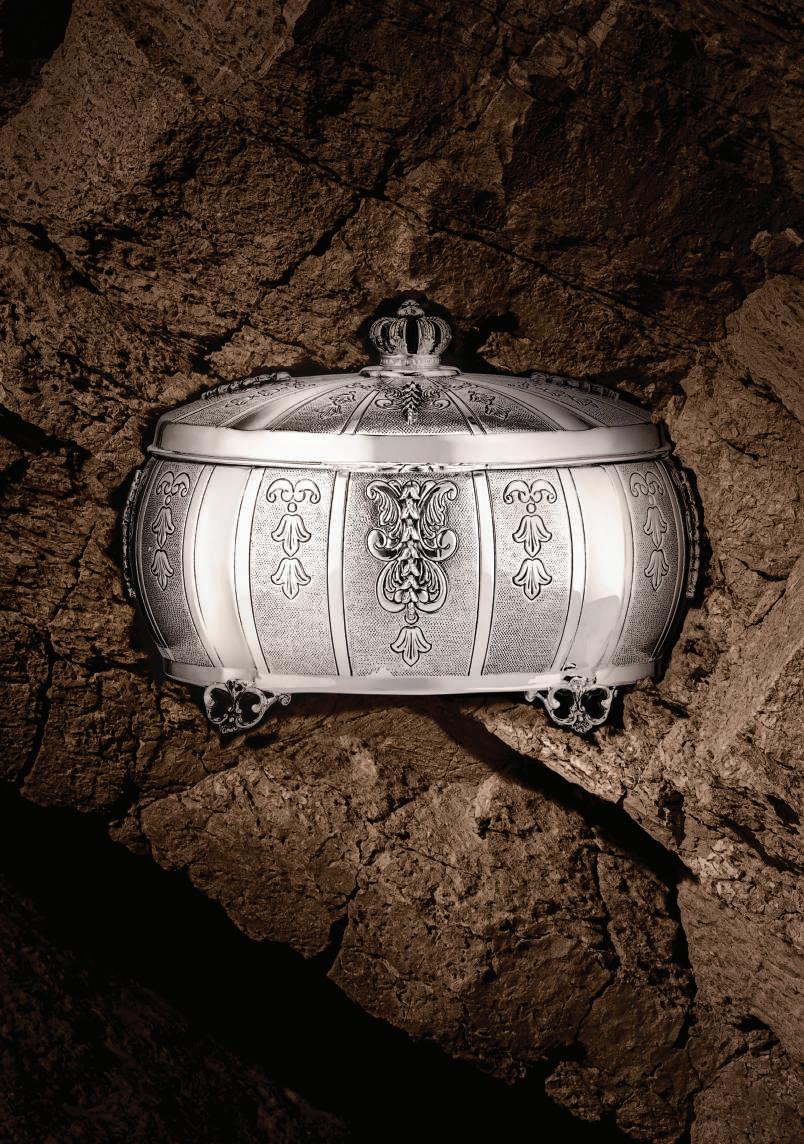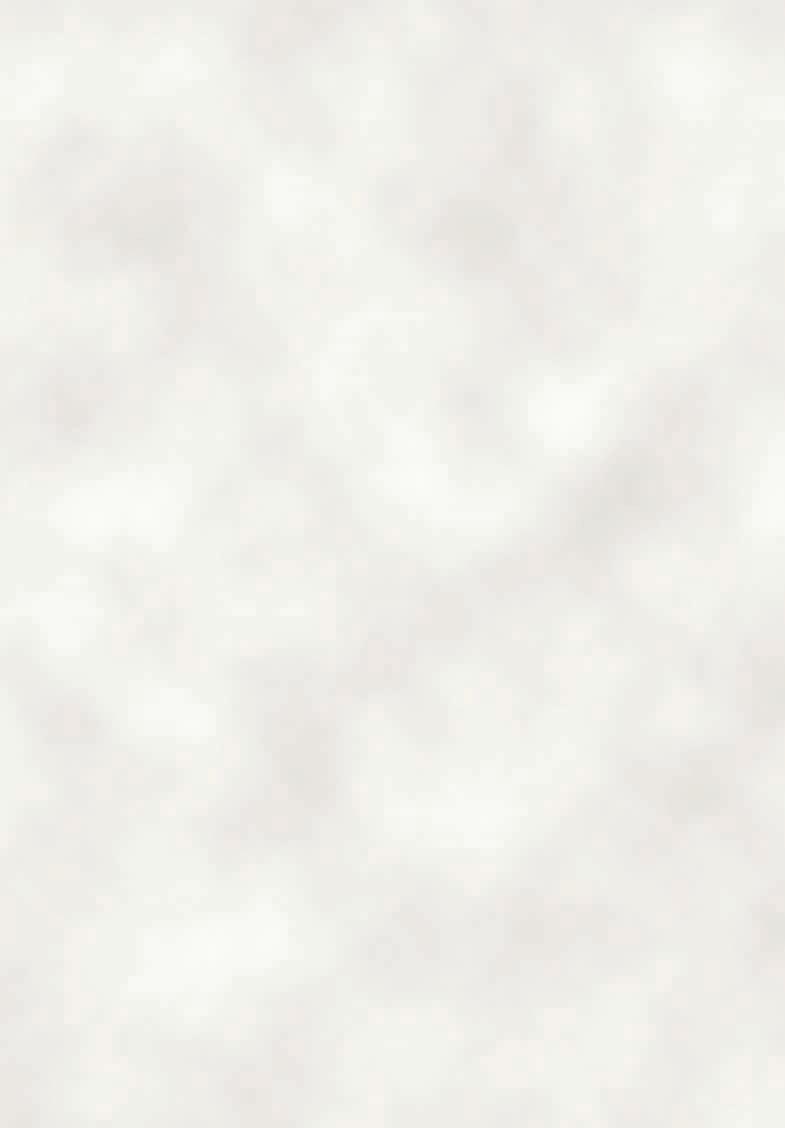










04
06
Dear Torah Tidbits Family
Rabbi Avi Berman
Yom Kippur: Aliya By Aliya Sedra Summary
Rabbi Reuven Tradburks
YOM KIPPUR SECTION
13
Laws of Yom Kippur
14Yizkor
15
24
26
30
32
36
38
Viduy
The Golden Mean
Rabbi Baruch Taub
A Second Chance
Rabbi Dr. Tzvi Hersh Weinreb
Fortuitous Forgiveness Rebbetzin Shira Smiles
Yom Kippur: Are Geula and Teshuva Identical? Rabbi Moshe Taragin
My Light and My Salvation Menachem Persoff
Ha'azinu: Aliya By Aliya Sedra Summary
Rabbi Reuven Tradburks
Israel Schedule
SUKKOT SECTION
Candle Lighting For Sukkot And Shmini Atzeret
Ushpizin
65
Torah Readings for Sukkot and Shmini Atzeret
66
68
69
Kiddush
Seder N'tilat Lulav
Insights and Instruction for N'tilat Lulav
70Hoshanot
74
76
78
82
84
86
88
90
92
Sukkot: Aliya By Aliya Sedra Summary Rabbi Reuven Tradburks
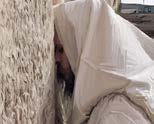
Probing The Prophets Rabbi Nachman Winkler
The Secret Message of Sukkot Rabbi Shalom Rosner
Sukkos: Festival of Gathering Rabbi Judah Mischel
Traveling to a Place Without a Sukka Rabbi Daniel Mann
Simchat Shmuel Rabbi Sam Shor
The Y- Files Weekly Comic Netanel Epstein
Exporting Otzar Beit Din Etrogim Rabbi Moshe Bloom
Torah 4 Teens By Teens Ariel Werblowsky // Noa Anders
SHMINI ATZERET/ SIMCHAT TORAH
96
98
Shmini Atzeret/ Simchat Torah: Aliya By Aliya Sedra Summary Rabbi Reuven Tradburks
Moses’ Death, Moses’ Life Rabbi Lord Jonathan Sacks zt"l
102
Of Endings and Beginnings
Rabbi Aaron Goldscheider
A special thanks to Ilan Block, a respected graphic artist, for his art piece!
See more of his work at @IlanBlock on Twitter and @SilanBlock on Instagram
HAVDALA
Yerushalayim
Aza
Beit
Gush
Raanana/
HA'AZINU
HavdalaCandles
6:525:41 6:555:59
6:536:00
6:535:57
6:545:57
Ranges 21 days Sun- Shabbat
Oct. 2 - 22 / 7-27 Tishrei
Earliest Tallit and Tefillin 5:41 - 5:55
Sunrise 6:32 - 6:46
Sof Zman Kriat Shema 9:29 - 9:34
Magen Avraham 8:53 - 8:57
Sof Zman Tefila 10:28 - 10:30
Modi’in / Chashmona’im6:01 6:545:576:57
6:535:576:57
(According to the Gra and Baal HaTanya)
Chatzot (Halachic Noon) 12:26- 12:21
Mincha Gedola (Earliest Mincha) 12:56 - 12:51
Be’er Sheva6:02
Netanya6:01 6:545:586:58
Plag Mincha 5:07 - 4:47
Rehovot6:02 6:535:416:57
6:545:586:58
Petach Tikva5:45 6:535:576:56
Ginot Shomron6:00 6:535:476:57
Haifa / Zichron5:51 6:525:566:56
Gush Shiloh6:00 6:545:586:58
Sunset (Including Elevation) 6:21 - 5:56
Seymour J. Abrams • Orthodox Union Jerusalem World Cen ter • Avrom Silver Jerusalem College for Adults • Wolinetz
Tel Aviv / Giv’at Shmuel6:02 6:525:566:56
Giv’at Ze’ev6:00
Chevron / Kiryat Arba6:01
6:535:576:56
Family Shul • Makom BaLev • Birthright • Yachad • NCSY in Israel • JLIC in Israel • Pearl & Harold M. Jacobs ZULA Out reach Center • The Jack Gindi Oraita Program • OU Israel Kashrut
Ashkelon6:03 6:545:586:57
6:555:596:59
Yad Binyamin6:02 6:515:506:55
ZVI SAND, PRESIDENT, OU ISRAEL Yitzchak Fund, Former President, OU Israel Rabbi Emanuel Quint z”l, Senior Vice President | Prof. Meni Koslowsky, Vice President
Tzfat / Bik’at HaYarden5:53 6:515:546:54
Golan5:58
Rabbeinu Tam (J'lem) - 7:36PM • Ha'azinu - 7:33pm
VAAD MEMBERS: Dr. Michael Elman | Stuart Hershkowitz | Moshe Kempinski | Sandy Kestenbaum | Harvey Wolinetz
RABBI AVI BERMAN, EXECUTIVE DIRECTOR, OU ISRAEL
David Katz, CFO, OU Israel | Chaim Pelzner, Director of Programs, OU Israel | Rabbi Sam Shor, Director of Programs, OU Israel Center Rabbi Sholom Gold, Dean, Avrom Silver Jerusalem College for Adults 22 Keren HaYesod <> POB 37015 <> Jerusalem 91370


phone: (02) 560 9100 | fax: (02) 561-7432 email: office@ouisrael.org website: www.ouisrael.org
Founders and initial benefactors of the OU Israel Center: George and Ilse Falk a"h
Torah
JERUSALEM MUNICIPALITY
OU Israel, Torah Tidbits does not endorse the political or halachic positions of its editor, columnists or advertisers, nor guarantee the quality of advertised services or products. Nor do we endorse the kashrut of hotels, restaurants, caterers or food products that are advertised in TT (except, of course, those under OU-Israel hashgacha). Any "promises" made in ads are the sole responsibility of the advertisers and not that of OU Israel, the OU Israel Center , Torah Tidbits.
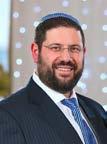 Executive Director, OU Israel
Executive Director, OU Israel
I had the zechut (merit) of my parents bringing my sib lings and I on Aliyah when I was 9. I share this often as it has positively impacted my Tefisat Olam (life view) and life in so many ways. When I made Aliyah in 1985 it was way before Rabbi Fass founded Nefesh B’Nefesh, making the process so much easier for Olim. Enabling me to grow up here was perhaps the biggest gift my par ents gave me.
As amazing as living in Israel is, there is no doubt that being far from family is hard. When I grew up, we only spoke to relatives in America on special occasions, due to the high cost per minute. It was a tremendous bracha that my grandparents and all of my aunts and uncles were able to come to Israel for my Bar Mitzvah (which coincided with my sister’s Bat Mitzvah). But, like many Olim, I also remember the family that was missing at many Smachot and Chagim.
On any given year, there are Olim who
miss their families during special occa sions, whether it be due to health, financial or other reasons. Yet this came to the fore front during Covid. We saw the emphasis the government placed on family when they made an exception clause for first degree relatives to come into Israel for Smachot. However, myself and others at the OU received calls and messages from OU constituents on a daily basis asking for help to get them in for Smachot of nieces/ nephews/cousins/etc. Unfortunately, with a few rare exceptions, these individuals had to miss being physically together for wed dings, Bar/Bat Mitzvahs, and births.
It is truly a blessing that this year (Bli Ayin Hara) the borders are open and many Jews are taking advantage of this opportunity to come home to Israel for the Chagim. However, the vast majority of Olim are here without their families for the holi days. When you speak to them, they almost always share that they feel incredibly happy with their decision to make Aliyah and live in our Holy Land, but that it is hard during the Chagim when so many people are celebrating with family.
I recently saw a touching post written by a young Olah who was brave enough to make Aliyah on her own. She shared that she counted 18 meals coming up over the holidays and that this is particularly daunting for single Olim who have to prepare and host a lot of meals if they don’t want to be alone or invite themselves out for a lot
of meals (or both).
I was also thinking about this because last week I attended a Brit that an Olim couple made. Neither side had their imme diate family here, and while it was a truly beautiful simcha, it would have meant the world for them and their parents and siblings to have been able to celebrate together in person
I salute and applaud the many Olim who left their families to lead their dream lives here in Israel. Yet I ask myself, how can we help our friends and neighbors feel more at home here, particularly during this time of the year. Personally, I want to take it upon myself to make a bigger effort to attend smachot for those whose families are unable to be here. I also want to be more conscious to invite more guests who might otherwise be alone and missing their loved ones.
The OU Israel Center strives to be a home for Olim. A place where they can come together to learn Torah and socialize. I see this at so many of our programs when Olim connect to other Olim who have become like family to them.
Two weeks ago, I went to Vancouver for my annual OU visit to the community where my wife and I served on Shlichut for five years running NCSY. We have friends there who have become family. While we had no biological family there, we had

the Shafrans and other local families who took us in like family to make sure we felt like someone was embracing us. I have no doubt that we were able to accomplish so much of what we did in Vancouver thanks to their love and care.
While Yom Kippur is a day of introspec tion, I encourage us all to look outward at those around us so we can work on our Achdut (unity) and “V’Ahavta L’reacha Kamocha” (love your fellow like you love yourself). I pray that Hashem answers all of our individual and communal prayers, sees our show of Achdut, and grants us all a Gmar Chatima Tova.
Wishing you all a meaningful Yom Kip pur, an uplifting and inspiring Shabbat, and a Chag Sameach, Rabbi Avi Berman
Executive Director, OU Israel aberman@ouisrael.org
In memory of Debbie's father Harold Klaff z"l
on his 34th yahrzeit
and in memory of Herby's mother
Lolly Dan
on her 18th yahrzeit
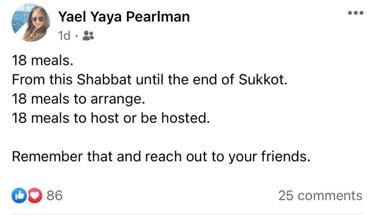
and in memory of Herby's father Avrome Dan
on his 35th yahrzeit
May their wonderful Neshamot have Aliyot Debbie & Herby Dan
descending as it were, in a cloud in the Holy of Holies. Atonement is achieved through the intimate, close encounter of G-d with man.

1st aliya (Vayikra 16:1-6) Moshe is told to instruct Aharon that entry into the Holy of Holies may only be done with the following elab orate procedure. For I, G-d, appear there in a cloud. Aharon is to bring a bull for a sin offering, along with a ram. The Jewish people bring 2 goats for sin offerings and a ram. Aharon wears 4 unique white gar ments for this service.
The goal or purpose of the elaborate ceremony of Yom Kippur is stated clearly; For I, God will appear in a cloud. Yom Kippur is the most intimate moment of Divine-human contact in the year. Atonement is achieved through the Divine
2nd aliya (16:7-11) Take the 2 goats of the people. Through lots, identify one as an offering and the other to send to the desert for atonement. Aharon offers the offering for him and his household.
In this moment of intimate contact of the Divine and us, we achieve atonement through pageantry. The pageantry of the 2 goats is rich; identical in appearance, their roles achieved through lots, their fate radically different. One will be an offering to G-d. The other will be sent to the barren desert.
3rd aliya (16:12-17) Aharon is to take a pan of coals and of in cense into the Holy of Holies, with the smoke of the incense enveloping the covering of the Aron. Aharon takes the blood of his sin offering and sprinkles it 7 times in the Holy of Holies and 7 times in front of the curtain, outside of the Holy of Holies. He repeats this with the blood of the one sin offering goat of the people.
In a good area in the Moshava - 2-story garden apartment, 200m + 190m garden, in Tabu, has great potential, parking, storage, for renovation. Asking 8.2 million NIS
In a good area in the Moshava2 apartments (can be connected), 1st floor, 170m, renovated, Sukkah porch, parking Palmach - 4 rooms, garden apt. about 100m asking 4.95million NIS Smadar 050-3114040 // 02-642-4329 smadi_bida@walla.co.il

This moment of entry into the Holy of Holies happens only once a year. The To rah does not say that the smoke from the incense fills the Holy of Holies. It says it covers the Aron. The incense smoke cov ering the Aron is reminiscent of Mt. Sinai, where the thick cloud covered the moun tain when G-d spoke. The Aron holds the 10 commandments, the concrete represen tation of the experience of Mt. Sinai. But it serves to symbolize the descent of the Di vine into this world; that is the essence of Sinai. And it is the essence of this moment; the Divine is joining us on this earth. This is the pinnacle moment; it is the invitation to the Shechina to join us.
4th aliya (16:18-24) He then takes the blood of his bull and the goat of the people and both places it on the incense altar and sprinkles it 7 times, purifying it. He thus completes the atonement of the holiest places. Aharon then places his hands upon the head of the other goat of the people, confessing all their sins, placing them on the head of the goat. The goat, bearing the sins of the people, is led out to the desert. Aharon now changes from the special white garments to his reg ular ones and offers both his and the peo



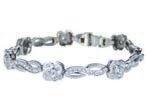

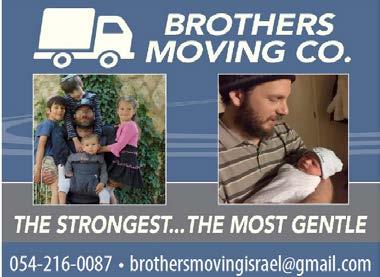
ple’s offering.
With the smoke still in the Holy of Ho lies, meaning the Divine Presence on this earth, the atonement can occur. The holi est places need atonement; in the pursuit of serving G-d we make mistakes. Those achieve atonement. But the great drama is the confession of sins upon the goat that is then led to the desert. Rav Solove itchik captured the drama as a metaphor. This goat is pushed over a cliff, falling to its death. The fall, the pull of gravity is a metaphor for man who allows himself to be pushed and pulled by his nature, fail ing to exercise will. Man can choose to assert his will. Or choose to be subject to the whims and forces of his nature, like the goat unable to break his fall. In a word, pulled down by the force of gravity to his demise. Such is the sinful human, allow ing forces to control him, failing to assert his will.
5th aliya (16:25-30) The one who led the goat to the desert need be purified upon his re turn as do the ones who burn the sin offer ings of Aharon and the people out of the camp. All of this is to be done every year on Yom Kippur accompanied by fasting.
May the Torah learned from this issue of Torah Tidbits be נ"על and in loving memory of Isaac Cohen
For on this day He provides you with atone ment and purity; you become purified be fore G-d.
While the drama of this day was punc tured by the destruction of the Temple, the atonement persists. Rabbi Akiva not ed: you become purified through the day and its rendezvous with G-d. He is the purifier.
6th aliya (16:31-34) This Kohen in the future will continue this, atoning for the Holy of Holies, the outer area, the altar, the Kohanim and the people. Once a year, this purification is done.
This atonement and purification are humbling, overwhelming, ennobling. For the Holy One reaches for mankind, descends in a cloud as it were to the Holy of Holies, granting atonement. It is His reach for man; His kindness, generosity, and love.
Yom Kippur is a gift, an affirmation of man, a chance to begin anew, a smile from the Holy One, appreciating our desire and passion, even if we err. Yom Kippur is the faith of the Holy One in us, giving us a year ly clean slate. That is a gift.
The maftir describes the extra mussaf that is brought in addition to the unique Yom Kippur offerings.
YESHAYAHU 57:14- 58:14
beloved husband, father, grandfather and father-in-law on his 9th yahrzeit, ירשת
Cohen, Eliaz and Aharoni families
Dagan,








Zayit,







Michele Coven Wolgel
Attorney and Notary
and our next step will be to plant a fruit tree. I never thought of myself as being the agricultural type, but the feeling of settling and planting a portion of Eretz Yisrael, has been truly euphoric. Iy”H, when we plant our tree, and eat the fruits that will grow one day, I think we will be able to truly appreciate that unique Kedusha found in the fruit of Eretz Yisrael!
Specializing in American Immigration and Naturalization Law for over 30 years

Early filing critical due to Corona delays!!!
www.wolgelaw.co.il
www.facebook.com/uscitizenshipinfo lawyer@wolgelaw.co.il Tel: 02 590 3444

Member, AILA (American Immigration Lawyers Association)
Of Counsel to Bretz & Coven, LLP
To conclude, when you buy your Tu B'shvat fruit this year, don’t search for those dried apricots and banana chips imported from Turkey. Rather, head over to the fresh produce and buy yourself some nice juicy Kedusha-filled Jaffa oranges and thank Hashem for bringing you to this land in order to be able to הבוטמ עבשלו הירפמ לוכאל, imbibing that Kedusha in every bite that you take!!
www.bretzlaw.com
 ATZERET/ SIMCHAT TORAH - V'ZOT HABRACHA
ATZERET/ SIMCHAT TORAH - V'ZOT HABRACHA

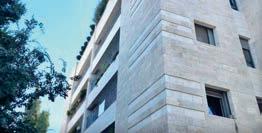
Amazing 5 room Penthouse in City Center close to The Great Synagogue. 350 sqm + 150 sqm balconies. Amazing views. Luxury residence. 2 parkings & storage.

Jonas Halfon: 054-700-9518
Baka: Tama 38, 130 sqm 5 room renovated apartment on 2nd floor + elevator. Private parking, 2 storage rooms (~30 sqm together).

Rachel Rich: 058-680-5800

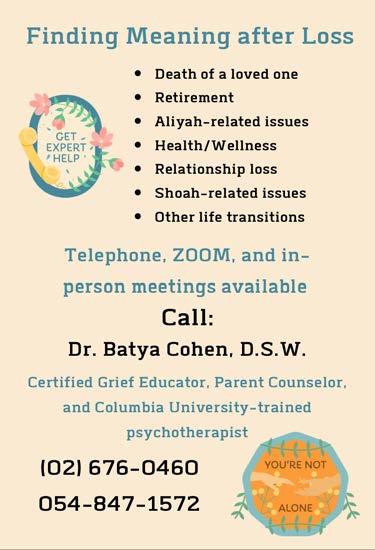
Bright! Rachel Rich: 058-680-5800
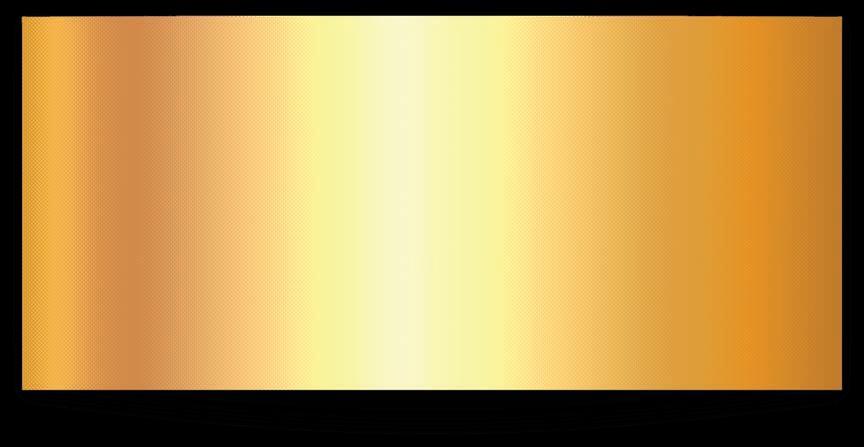
Beautiful 3 room furnished apartment in a luxury residence in the City Center, near Rechavia. 70 sqm on ground floor, private parking + storage room. Semi Olympic swimming pool, gym, doorman.

Jonas Halfon: 054-700-9518

Beautiful 3 room apartment in Rachel Imenu Street, minutes walk to Emek Refayim. 73 sqm on 4th floor, beautifully renovated, bright, quiet and spacious. 3 exposures. In (early) process of Tama 38 (urban renewal program).
Ran Ben Harush: 053-522-0822

Mevo Hamatmid
2 room apt,

walk
NIS 2,100,000
Even 054 621 6069

Bar Kochva St., French Hill
RENOVATED 3 room apartment 66 sqm, 1st floor. Lots of light, AC. Possibility for Urban Renewal project. NIS 2,100,000 Nelly Efrati Artom 052 476 4356
Rabbi Uziel Street, Bayit Vagan
Multi-level 223 sqm, huge terrace, Building rights for 455+ sqm amazing views balconies, storage ,3 private parking spaces, private elevator NIS 12,950,000 Ezra Levy 054 842 1289
Beit Nekofa, Private Estate
Authentic Arab style house, 5 room, fully accessible Over 1.5 dunam land.

Possibility to build second house on the lot
Asking NIS 8,850,000
Nelly Efrati Artom 052 476
Rechavia Garden Duplex Spacious garden apt. 400 Sqm on two floors+ 200 Sqm wraparound garden. Can be separated into two units. 2 indoor parking spaces. Lots of storage. Elevator. Orna Even 054-621-6069
Great
NIS











Gluck 052 478 9193
Yael St, Baka Penthouse
Architecturally designed, beautiful penthouse apt, 5 rooms, 3 bathrooms, Succah, parking, storage. Perfect for a family- ready to move in. NIS 6,400,000

Orna Even 054-621-6069
Oved Street, Abu-Tor
Duplex penthouse with spectacular views. Currently divided into 2 units. Total of 300+ Sqm, Succah balconies, Storage, indoor parking, private elevator. NIS 6,670,000 Menachem Lindner 050-337-7792
Newly renovated, 4 bedrooms,





baths,150 sqm, large balcony

view, U/F heating, central a/c,

NIS 6,465,000
Ariyel Maresky 072 392 2109
TORAH Shlomo Ben Yosef, Armon Hanetziv Horkanya Penthouse, Katamon/Rasco13 Laws Of Yom Kippur

14 Yizkor
15 Viduy
24 The Golden Mean Rabbi Baruch Taub
26 A Second Chance Rabbi Dr. Tzvi Hersh Weinreb
30 Fortuitous Forgiveness Rebbetzin Shira Smiles
32 Are Geula and Teshuva Identical? Rabbi Moshe Taragin
36 My Light and My Salvation Menachem Persoff
1. All activities forbidden on Shabbat are forbidden on Yom Kippur.
2. The five abstentions of Yom Kippur are:
• Eating and drinking
• Washing
• Applying ointments to the body
• Wearing shoes
• Having marital relations
continued on next page...
3. An adult may handle food and feed children on Yom Kippur.
4. Sick people are not exempt from fasting unless there is at least a remote possibility that fasting would endanger their lives. A halachic authority should be consulted in cases of illness.
5. Washing any part of the body, whether in hot or cold water, is forbidden on Yom Kippur, except for the purpose of cleanliness. One should wash his hands up to the knuckles upon rising in the morning, and recite the blessing. After using the bathroom, or after touching a covered part of the body, one should wash his hands up to the knuckles to cleanse himself for prayer. A kohen who is to recite the priestly blessing should wash his entire hands. An ill person may wash himself.
6. Applying any kind of ointment, lotion, etc. is forbidden on Yom Kippur.
7. It is forbidden to wear shoes made wholly or partly of leather.
1. In Havdala, no blessing on fragrant spices is recited. The Havdala candle must be lit from fire which was burning all of Yom Kippur.
2. To celebrate the forgiving of our sins, one should eat well and be in a joyous mood after Yom Kippur ends.
3. It is also customary at the conclusion of Yom Kippur to commence the building of the Sukkah.
(The laws above are base on the volume, ‘Festivals and Fast, published by Student Organization of Yeshiva)
Yizkor is recited in memory of a loved one both on Yom Kippur and on Shmini Azeret.
The custom to pledge to give charity on behalf of the departed is recorded in Ohr Hachayim 621:6.
For full Yizkor text please consult your machzor.
The following is an elaborated commentary on the Viduy which is recited throughout the day of Yom Kippur. It should be used along with the text in your machzor.
The following is an elaborated commentary on the Viduy which is recited throughout the day of Yom Kippur. It should be used along with the text in your machzor.


For each of the following 24 "terms of sin", one symbolically strikes the left side of his/her chest with the right fist. Before or after saying the word itself, sight-read (or say) the English text and allow your mind and heart to really become part of the VIDUI process by backing up your words. Don't hesitate to actually say more than the text - in any language - adding personal prayers, thoughts, and feelings. T A L K T O G D . This is a special time to do that. (Don't worry about being slower than others; just find a good place to stand where you will not inconvenience others - so you won't have an additional sin to repent.)
The first part of the English text is based on the word itself. Then there are some of the items included by Rabbi Moshe Sternbach in HaDerech LiTshuva. Remember that the connection is based on the Alef-Bet, and won't be obvious from the English.
Also, keep in mind that we must repent once-in-a-while violations - not just whole behavior patterns. E.g. "We have stolen". This is not just for a person who is a career thief; it is also for a person who is basically law-abiding, but once in a rare while will download a pirated movie or copy a friend's CD to his computer. Or - one who usually avoids gossip and Lashon HaRa, but thought a particular episode about someone else was SO funny, that he just had to share it with his friend.
W
w h o l e v a r i e t y o f s i n s . W h a t w e h a v e d o n e w a s n o t n e c e s s a r i l y t o r e b e l a g a i n s t G - d , b u t w e n o n e t h e l e s s a r e d e v a s t a t e d b y o u r b e h a v i o r
Wehaveeaten-forbiddenfoods,questionablefoods,withoutbrachot,withoutgood mannersandconcernforothers;thereissomethinglackinginourfaithinG-d (evenjustsometimes);wedon'talwayssayAmenproperly,wehaveacruelstreak...
W e h a v e b e t r a y e d G d b y n o t d o i n g H i s m i t z v o t p r o p e r l y a n d b y s i n n i n g i n a w a y t h a t i s d i s l o y a l t o G d ; w e h a v e b e t r a y e d f a m i l y & f r i e n d s WehavewastedprayerandTorahstudytime;wewerenotcarefulwithMilk&Meat; wereliedonourselvessometimestotheexclusionoftrustinginG-d;wehavesaid"sloppy" brachot;wehavebelittledparents,teachers,scholars,friends;wehavewastedtime...
W e h a v e s t o l e n t h i n g s , t i m e , o t h e r ’ s s l e e p , i d e a s ; w e h a v e d e c e i v e d . . .
Wehavebeenarrogant;wronglytookcreditforsomething;harmedorannoyed others;notraisedourchildrenproperly;havenotbeenstrictenoughaboutsexualbehavior; havenotrepaidkindnessesproperly...
W e h a v e s l a n d e r e d G d ( b y q u e s t i o n i n g H i s j u s t i c e a n d k i n d n e s s ) a n d p e o p l e . W e h a v e s a i d o n e t h i n g a n d m e a n t s o m e t h i n g e l s e .
Wehavegossiped,defamed,usedvulgarities,spokendisrespectfully,shoutedmisusedthepowerofspeech;notgivenpeoplethebenefitofthedoubt...
W e h a v e c a
Wehaveentertainedimproperthoughts-duringdavening,Torahlearning, oringeneral;wehavedavenedwithoutkavana;burdenedothers; encroachedonanother's"space";lookedatindecentpictures,literature,etc.
WehaveneglectedtobeproperlyrespectfulofG-d;showedlackof concernforthepossessionsofothers;saidwe'resorrywithouttrying tomeanit;fomenteddissent;joinedwithothersandwastedtimeonnonsense...
WehavetakenG-d'sNameinvain;beencarelessaboutritualwashingofourhands; beendisrespectfultoourparents;we'atelikepigs';threwfood,mingledimmodestly...
W e h a
WehavecausedChilulHaShem;wehavefalselyflatteredothers;thoughtbadthoughts; unjustlysuspectedothersofwrongdoing;desecratedtheShabbat;notpaidourdebts; desired(inanunhealthy,unkoshermanner)thepossessionsofothers...
W e h a v e " a t t a c h e d " o u r s e l v e s t o f a l s e h o o d ; l y i n g h a s b e c o m e a p a r t o f o u r l i v e s ; w e h a v e a c c u s e d o t h e r s f a l s e l y ; c o m p o u n d e d l i e s b y l y i n g m o r e ; h u n g o u t w i t h t h e w r o n g c r o w d
Wehavegivenerroneousopinionsandadvice;defiledourselvesandothers; handledMuktzaonShabbatorYomTov;belittledGoodandchosenBad...
W e h a v e g i v e n e v i l c o u n s e l ; w e h a v e a b u s e d t h e t r u s t o f o t h e r s ; a d v i s e d o t h e r s i n w a y s t h a t a r e n o t i n t h e i r b e s t i n t e r e s t Wehavesecludedourselvesimproperlywithmembersoftheoppositesex;joinedothers intime-wastingactivities;knowinglysinned;lackedproperreverenceandaweforG-d...
W e h a v e b e e n d e c e i t f u l ; m a d e i n t e n t i o n a l l y m i s l e a d i n g s t a t e m e n t s ; f a l s e p r o m i s e s ; h a v e n o t t r i e d h a r d e n o u g h t o k e e p o u r p r o m i s e s WehavemadeHaShemangryatus;beenungrateful;intendedtoharmothers(even ifwedidn't);wastedtime;delayedpayingwages;calledothersderogatorynicknames...
W e h a v e c l o w n e d a r o u n d a b o u t m a t t e r s t h a t w e s h o u l d h a v e t r e a t e d s e r i o u s l y ; w e h a v e r i d i c u l e d g o o d p e o p l e ; w e ' v e j o k e d a b o u t t h i n g s , w h i c h p r e v e n t s u s f r o m p r o p e r T ' s h u v a b e c a u s e w e d o n ' t t a k e t h i n g s s e r i o u s l y e n o u g h Wehave-notlearnedTorahproperly;wornShaatnez;notbeenkind&charitable;notbeen meticulousaboutmitzvot&halacha;notbeenscrupulousinourdealingswithothers...
W e h a v e r e b e l l e d ; d e f i e d G d ' s w i l l ; s i n n e d b e c a u s e o f i n c o m p l e t e f a i t h
Wehaveheldothersbackfromdoingmitzvot;notbehavedproperlyinbusiness...
W e h a v e a n g e r e d G d (so to speak) b y d i s r e g a r d i n g H i s m i t z v o t , e t c .
Weviolatedpromisesandvows;tookrevengeandboregrudges;benefitedfrom thisworldwithoutbrachot;werelazyinTorahlearningandserviceofHaShem...
W e h a v e t u r n e d a w a y , i g n o r e d o u r r e s p o n s i b i l i t i e s t o G d ( a n d f e l l o w s )
WehaveturnedfromJewishcustoms;contradictedourparentsorTorah authorities;dealtwithcontraband;forgivenothersinword,butnotinourhearts...
W e h a v e b e e n p e r v e r s e a n d h a v e s i n n e d b e c a u s e o f p e r v e r t e d r e a s o n i n g ; w e h a v e d e l i b e r a t e l y s i n n e d t o g r a t i f y o u r d e s i r e s Wehavebeenfalselymodest;aburdentoourspouse; wewereinsensitivetoorphans&widows;wehaveviolated(minor)prohibitions...
W e h a v e a c t e d w a n t o n l y ; d e n i e d t h e v a l i d i t y o f ( s o m e ) m i t z v o t ; w e b a s i c a l l y b e l i e v e i n G d & T o r a h , b u t h a v e d i s r e g a r d e d a s p e c i f i c m i t z v a WehaverejectedtheYokeofHeaven;wewereafraidtoreproachsomeone; weturnedourheartstoidleness;weopenedsomeoneelse'smail;welackedfearofsin...
KIPPUR/SUKKOT/SHMINI ATZERET
KIPPUR
HA'AZINU
SUKKOT
SHEMINI ATZERET/ SIMCHAT TORAH
V'ZOT HABRACHA
t
e
n t o u
W e h a v e p e r s e c u t e d o t h e r s ; c a u s e d s u f f e r i n g ; b e e n c a l l o u s t o o t h e r s Wehavedistressedourfamilymembers;weputourneedsbeforeG-d's...
W e h a v e b e e n s t u b b o r n ; w e h a v e r e f u s e d t o s e e G d ' s H a n d i n l i f e ; w e h a v e i g n o r e d o r d e n i e d t h a t w h a t h a p p e n s i n t h i s w o r l d i s n o t c h a n c e , b u t G d ' s W i l l
Wehavebeenjealousofothers;beenstingywithTzedaka;readimproperbooks; listenedtoandacceptedLashonHaRa;notbeencarefulwithKriyatSh'ma...
Wehavepursuedhonor;quarreledfornogoodreason;ranaftertemptations...
Wehave-lied;forgottenG-dandourcommitmenttoHim;weresilentwhenwe shouldhaveobjected;gloatedoveranother'smisfortune;hatedothers;squandered physical&spiritualenergies...
W e h a v e b e e n a b o m i n a b l e ; h a v e b e c o m e l o a t h s o m e t o G d ; i m m o r a l i t y ; i d o l a t r y ; h a u g h t i n e s s ; a n g e r
Wehavedesiredsinfulthings;belittledtheTorah;wedidnottaketheopportunity torepent;werenotcarefulwithourT'filin;weresloppywithdavening...
W e h a v e s t r a y e d ; d r i f t e d f u r t h e r a w a y f r o m G d r a t h e r t h a n g e t t i n g c l o s e r t o H i m
Y o u h a v e l e t u s g o a s t r a y ( w e l o s t t h e m e r i t t o h a v e Y o u r h e l p ) ; w e h a v e m i s u s e d f r e e d o m o f c h o i c e f o r o u r s e l v e s a n d o t h e r s
In summary... We have veered from Your mitzvot and good rules, and that hasn't been worth it at all. We acknowledge that Your judgments against us are just, because You act truthfully and we have brought evil upon ourselves. (Nonetheless, please forgive us...)
W e h a v e b e e n w i c k e d ; d o n e s i n s t h a t a r e p a r t i c u l a r l y i d e n t i f i e d w i t h w i c k e d n e s s , s u c h a s h i t t i n g o t h e r s , s t e a l i n g , p l a n n i n g t o s i n
W e h a v e c o r r u p t e d o u r c h a r a c t e r ; b e e n a r r o g a n t ; e x t r e m e l y a n g r y ; v u l g a r s i n s w h i c h a f f e c t o n e ' s c h a r a c t e r
After summarizing, we once again use an alphabetical format (this time, a double alphabetical arrangement) to enumerate a multitude of sins. And once again, the custom is to strike the heart (left side of the chest) for each AL CHEIT...
a c c i d e n t a l l y ( o r u n d e r d u r e s s ) a n d w i l l i n g l y - even when we don't mean to sin, we still must repent, for it indicates a lack in us that we sinned. How much more so, when it is intentional
t h r o u g h h a r d n e s s o f t h e h e a r t - refusing to admit that we might be wrong often results in sin. We have to be more humble...
t h r o u g h i g n o r a n c e - lack of Torah learning results in doing the wrong thing. Rather than plead ignorance, we must strive for greater knowledge
w i t h w o r d s - many sins, especially related to misuse of the power of speech, such as flippant oaths, cursing, gossip. We must be more careful of what emerges from our lips...
i n p u b l i c o r i n p r i v a t e - sins in public are potential Chilul HaShem; sins in private often indicate fear of what others will think, but a disregard for what G-d thinks. Negative either way.
t h r o u g h i m m o r a l i t y - this includes a wide variety of sins and includes the sins themselves as well as that which a person does that causes lust and leads to the more serious sins...
w i t h h a r s h s p e e c h - generally, this refers to misuse of the power of speech in all forms; specifically, it refers to speaking harshly to someone and unjustly hurting his/her feelings.
w i t h k n o w l e d g e a n d d e c e i t - refers to using our knowledge in order to deceive and take advantage of others. Also includes deceiving ourselves.
t h r o u g h t h o u g h t s - this includes fantasizing about sin; such thoughts are the root of sin and also interfere with Torah learning and davening. "I was ONLY thinking about..." is no excuse.
t h r o u g h w r o n g i n g a f e l l o w - deceiving, taking advantage of a friend, etc.; also refers to unfair treatment in business
b y i n s i n c e r e c o n f e s s i o n - T'shuva must be "in your mouth and in your heart, to do..." Let our words motivate us to sincere repentance and let our sincere repentance be accompanied by proper VIDUI (VIDUI can start or 'cap' the T'shuva process)
i n i m m o r a l g a t h e r i n g s - being part of a group whose conversations are improper can easily lead one astray. "But everyone else was there!" is not a reason or excuse
w i l l f u l l y a n d c a r e l e s s l y - even when we did not mean to sin, we have what to repent - we should have been more careful, etc.
b y b e l i t t l i n g p a r e n t s ( i n c l . i n l a w s ! ) a n d t e a c h e r s - this is not only something we do or say, but even something we think. It all is wrong and it threatens the strength of the Chain of Tradition.
Li¤«p¨t§l Ep`«¨h¨g¤W `§h¥g l©r
,oFv¨x§aE q¤p«Ÿ`§A
Li«¤p¨t§l Ep`«¨h¨g¤W `§h¥g l©r§e
.a¥N©d uEO¦`§A
Li¤«p¨t§l Ep`«¨h¨g¤W `§h¥g l©r ,z©r«¨c i¦l§a¦A
Li¤«p¨t§l Ep`«¨h¨g¤W `§h¥g l©r§e
.m¦i«¨z¨t§U iEH¦a§A
Li¤«p¨t§l Ep`«¨h¨g¤W `§h¥g l©r
.x¤z«¨Q©aE iEl¨B©A
Li¤«p¨t§l Ep`«¨h¨g¤W `§h¥g l©r§e
,zFi¨x£r iEN¦b§A
Li¤«p¨t§l Ep`«¨h¨g¤W `§h¥g l©r
.d¤R xEA¦c§A
Li¤«p¨t§l Ep`«¨h¨g¤W `§h¥g l©r§e ,d¨n§x¦n§aE z©r«©c§A
Li¤«p¨t§l Ep`«¨h¨g¤W `§h¥g l©r .a¥N©d xFd§x©d§A
Li¤«p¨t§l Ep`«¨h¨g¤W `§h¥g l©r§e ,©r«¥x z©`«¨pFd§A
Li¤«p¨t§l Ep`«¨h¨g¤W `§h¥g l©r
iEC¦e§A
Li¤«p¨t§l Ep`«¨h¨g¤W `§h¥g l©r§e
z©ci¦r§e¦A
Li¤«p¨t§l Ep`«¨h¨g¤W `§h¥g l©r
.d¨b¨b§W¦aE oFc¨f§A
Li¤«p¨t§l Ep`«¨h¨g¤W `§h¥g l©r§e ,mi¦xFnE mi¦xFd lEf§l¦f§A
KIPPUR - HA'AZINU - SUKKOT - SHEMINI ATZERET/ SIMCHAT TORAH - V'ZOT HABRACHA 5783
KIPPUR/SUKKOT/SHMINI ATZERET 5781
b y e x e r c i s i n g p o w e r - it is wrong to use one's power to intimi- date others; one must not arrogantly act superior over others.
t h r o u g h d e s e c r a t i o n o f G d ' s N a m e - includes major Chilul HaShem as well as relatively minor acts which cause a lowering of the respect for G-d or Torah in the eyes of others.
t h r o u g h f o o l i s h s p e e c h - "why do we say stupid things?" One has to repent this too, since speech is such a precious & powerful feature of humans. And, foolish speech often leads to action.
t h r o u g h i m p u r e l i p s - this is one of several references to improper speech; in this case, the subject is vulgar language and cursing.
w i t h t h e E v i l I n c l i n a t i o n - we sometimes fail to fight our Yeitzer HaRa - rather flirt with it, then give in to it and follow it.
k n o w i n g l y a n d u n k n o w i n g l y - we want to repent even sins that we are unaware of having done. Also, sins against others who may or may not know what we've said about or done to them.
Li¤«p¨t§l Ep`«¨h¨g¤W `§h¥g l©r ,c¨i w¤f«Ÿg§A
Li¤«p¨t§l Ep`«¨h¨g¤W `§h¥g l©r§e
.m¥X©d lEN¦g§A
Li¤«p¨t§l Ep`«¨h¨g¤W `§h¥g l©r
.d¤R zEW§t¦h§A
Li¤«p¨t§l Ep`«¨h¨g¤W `§h¥g l©r§e
,m¦i«¨z¨t§U z©`§nªh§A
Li¤«p¨t§l Ep`«¨h¨g¤W `§h¥g l©r ,r¨x¨d x¤v«¥i§A
Li¤«p¨t§l Ep`«¨h¨g¤W `§h¥g l©r§e
`Ÿl§aE
NOTE: G-d's name ©DF«l|¡` is pronounced e-LO-ahh (Ashkenazi) or e-LOwahh (S'faradi)N O T ELOHA. Two points: the accent is on the F«l syllable, not the ©D . And secondly, the PATACH under the HEI is pronounced BEFORE the aspiration of the HEI. (Just like it is with the ©g of TAPU'ACH, RU'ACH, MIZBEI'ACH)
For all of these sins, G-d of Forgiveness, forgive us, pardon us, atone for us. (These are different levels of forgiveness - commentators disagree concerning the terminology. Basically, we ask G-d to forgive what we've done, not to punish us for it, not to even hold a sin against us, and to completely erase it, as if we never did it. Some suggest that S'LACH is to forgive, but not necessarily to forget. M'CHAL is more - maybe like forgiven & forgotten.)
b y y i e l d i n g t o b r i b e r y - monetary bribery as well as flattery with ulterior motives are insidious to honest dealings among people. Bribery and flattery can blind one and cause a multitude of sins in their wakes.
t h r o u g h d e n i a l a n d f a l s e p r o m i s e s - we have not been honest, neither with G-d nor with our fellow human beings. Remember: this need not be a chronic condition, we must repent even the minor instances of dishonestly. "I'm basically honest, but..." Not good either.
w i t h L a s h o n H a R a - another misuse of the power of speech. A particularly serious sin because it often results in permanent damage to a person's reputation, even when groundless. "But it's true" is not an acceptable excuse for Lashon HaRa. Neither is "I was only joking".
t h r o u g h f o o l i n g a r o u n d - not taking someone's reproach of us seriously, laughing it off, will impede T'shuva. Ridiculing others, joking at someone else's expense are serious offenses.
i n b u s i n e s s - business ethics and proper behavior in the market place are just as much a part of Halacha as is fasting on Yom Kippur or keeping Shabbat. Extra warning: these kinds of sin often involve Chilul HaShem and are often disregarded by many
w i t h f o o d & d r i n k - one should not pat himself on the back for keeping kosher; one needs to carefully answer the question: "Am I as careful and as strict as I ought to be?" Included in this sin are not making brachot properly, sloppy benching, careless washing for meals, poor table manners, gluttony, stinginess with guests...
t h r o u g h i n t e r e s t a n d e x t o r t i o n - taking or paying interest on personal loans is forbidden. Besides the sin, it causes one to become hard-hearted.
t h r o u g h h a u g h t i n e s s - arrogance is a particularly reprehensible character trait. We must repent sins that result from it as well as work on ridding ourselves of this negative characteristic.
w i t h p r y i n g e y e s - this includes looking at forbidden things, invasion of privacy of others, expressing disapproval of others with a raised eyebrow
w i t h i d l e c h a t t e r - yet another expression of the misuse of speech. Here it can refer to davening and benching without kavana, as well as pointless and time-wasting conversation.
w i t h h a u g h t y e y e s - looking down at others. This is parallel to the earlier reference to haughtiness, a particularly negative trait.
w i t h b r a z e n n e s s - acting without shame and a bit of natural embarrassment is a contributory factor to a host of other sins
Li¤«p¨t§l Ep`«¨h¨g¤W `§h¥g l©r
,o¨Y©n§aE `¨V©n§A
Li¤«p¨t§l Ep`«¨h¨g¤W `§h¥g l©r§e
.d¤Y§W¦n§aE l¨k£`©n§A
Li¤«p¨t§l Ep`«¨h¨g¤W `§h¥g l©r
,zi¦A§x©n§aE K¤W«¤p§A
Li¤«p¨t§l Ep`«¨h¨g¤W `§h¥g l©r§e
.oFx¨B z©I¦h§p¦A
Li¤«p¨t§l Ep`«¨h¨g¤W `§h¥g l©r
.o¦i«¨r xET¦U§A
Li¤«p¨t§l Ep`«¨h¨g¤W `§h¥g l©r§e ,Epi«¥zFz§t¦U ©gi«¦U§A
Li¤«p¨t§l Ep`«¨h¨g¤W `§h¥g l©r ,zFn¨x m¦i«©pi¥r§A
Li¤«p¨t§l Ep`«¨h¨g¤W `§h¥g l©r§e
.g©v«¥n zEG©r§A
i n t h r o w i n g o f f t h e Y o k e - we exist to learn Torah, perform mitzvot, and be good people. Many sins come from shirking our responsibilities.
i n j u d g m e n t - refers to sins of unfair judgment, in the formal courtroom as well as in everyday life. It even refers to judging G-d.
t h r o u g h e n t r a p p i n g a f e l l o w - taking advantage of others, manipulating people for our own purposes
t h r o u g h a b e g r u d g i n g e y e - being jealous and stingy. Finding excuses for not giving Tzedaka or being generous with others. Not helping others.
t h r o u g h l i g h t h e a d e d n e s s - we are often frivolous. This is especially inappropriate in shul and when learning Torah or davening.
w i t h s t u b b o r n n e s s - refusing to recognize that we might be wrong. Not learning from experience. Not taking constructive criticism. This is a major obstacle to T'shuva, and we must repent this in order to repent other things too.
Li¤«p¨t§l Ep`«¨h¨g¤W `§h¥g l©r ,lŸr z©wi«¦x§t¦A
Li«¤p¨t§l Ep`«¨h¨g¤W `§h¥g l©r§e .zEli¦l§t¦A
Li¤«p¨t§l Ep`«¨h¨g¤W `§h¥g l©r ,©r«¥x z©I¦c§v¦A
Li¤«p¨t§l Ep`«¨h¨g¤W `§h¥g l©r§e
.o¦i«¨r zEx¨v§A
Li¤«p¨t§l Ep`«¨h¨g¤W `§h¥g l©r
,W`Ÿx zEN©w§A
Li¤«p¨t§l Ep`«¨h¨g¤W `§h¥g l©r§e
.s¤x«Ÿr zEi§W©w§A
TORAH
ATZERET
e n t h u s i a s t i c a l l y - One must examine his wrongdoings and see if there is the added sin of doing them with a smile or with "licking one's lips".
b y g o s s i p i n g - The prohibition includes Lashon HaRa and character assassination, but also includes telling tales with no intention to hurt anyone. It is all too frequent that people get hurt from plain gossip.
t h r o u g h v a i n o a t h s - swearing falsely or frivolously can damage the underpinnings of interpersonal relationships as well as being a serious lack of respect to G-d. One has to be extremely careful in this regard.
t h r o u g h b a s e l e s s h a t r e d - do you hate a person when you should really be hating the wrong things that he does?. This distinction is crucial for the proper growth and development of Klal Yisrael.
i n m a t t e r s o f " g i v i n g a h a n d " - we have been callous towards the needs of others. Also, we have sometimes joined with others in evil.
t h r o u g h c o n f u s i o n - this refers to a diminished faith in G-d caused by not seeing G-d's hand in everything and by doubting the validity of the Torah and the authority of halacha.
Li¤«p¨t§l Ep`«¨h¨g¤W `§h¥g l©r ,r©x¨d§l m¦i«©l§b©x z©vi¦x§A
Li¤«p¨t§l Ep`«¨h¨g¤W `§h¥g l©r§e .zEli¦k§x¦A
Li¤«p¨t§l Ep`«¨h¨g¤W `§h¥g l©r ,`§e¨W z©rE«a§W¦A
Li¤«p¨t§l Ep`«¨h¨g¤W `§h¥g l©r§e
.m¨P¦g z©`§p¦U§A
Li¤«p¨t§l Ep`«¨h¨g¤W `§h¥g l©r ,c¨iÎz¤nE«U§z¦A
Li¤«p¨t§l Ep`«¨h¨g¤W `§h¥g l©r§e .a¨a¥l oFd§n¦z§A
After enumerating different kinds of sins, we ask for forgiveness of sins according to punishment & style:
For sins which would require a sacrifice in the Beit HaMikdash, then for those which one gets corporal or capital punishment from Beit Din or penalties from Heaven.
Then we mention sins of commission and omission, sins we know about and those of which we - but not G-d - are unaware
.d¨lFr m¤di¥l£r mi¦a¨I©g Ep«¨`¤W mi¦`¨h£g l©r§e
.z`¨H©g m¤di¥l£r mi¦a¨I©g Ep«¨`¤W mi¦`¨h£g l©r§e .c¥xFi§e d¤lFr o¨A§x¨w m¤di¥l£r mi¦a¨I©g Ep«¨`¤W mi¦`¨h£g l©r§e
.iEl¨Y m¨W¨`§e i`©C©e m¨W¨` m¤di¥l£r mi¦a¨I©g Ep«¨`¤W mi¦`¨h£g l©r§e
z©M©n m¤di¥l£r mi¦a¨I©g Ep«¨`¤W mi¦`¨h£g l©r§e
zEw§l©n m¤di¥l£r mi¦a¨I©g Ep«¨`¤W mi¦`¨h£g l©r§e


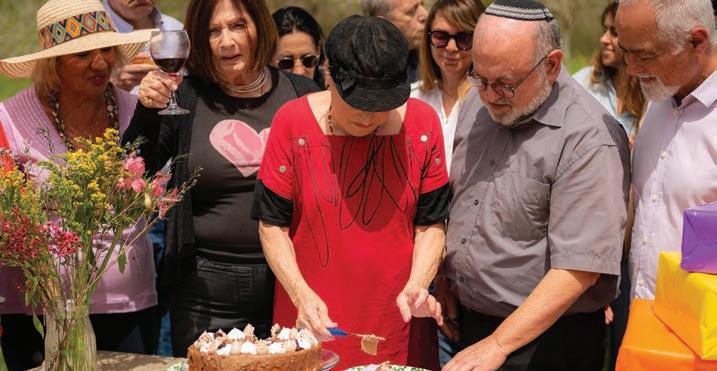


The economist John Kenneth Galbraith once commented that the definition of a true philosopher is someone who can defend two polar opposite theories and be comfortable with Galbraith was on to something, but he was preceded by Cha zon Ish.
In a letter, Chazon Ish comments on the qualifications of a Navi. He quotes Ram bam for example who states that Nevu’ah can only be received and transmitted if the prophet is b’simcha. Remarkably that means, comments Chazon Ish, that when Yirmiyahu wrote Eicha he was b’simcha! This counter-intuitive reality highlights the fact that a person has the capacity to live with two contradictory qualities and function comfortably with both of them simultaneously.
In fact a careful reading of the first and second chapters of Rambam’s Hilchot Deot will reveal that this is the proper under standing of the Golden Mean, the middle path in exercising character traits. Contrary to the generally accepted understanding of this central motif that this “middle road” is “moderation” in the classic sense ( not extremely arrogant yet not extremely hum ble, but somewhere in the middle). Rabbi Menachem Mendel of Kotzk was known to say “A horse walks in the middle of the road not a Jew”.
A proper analysis of Rambam’s halachot will reveal the true understanding of the Golden Mean.

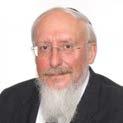
He can also exercise extreme humility and an embracing love
It is not about a constant positioning “in the middle “Deot is about being in total control of one’s emotions. True success
Rabbi Emeritus, The BAYT Toronto OU Israel Facultyin midot is about the ability of discipling oneself to be able to access the necessary character trait and emotional response from the entire rainbow spectrum of Deot from one extreme to the other when nec essary. It is about being totally in control to the extent that one is able to calmly adapt to the necessary Mida of the moment.
Rambam’s presentation is based upon the mitzvah of Imitatio Dei, Vehalachta B’drachav. Man’s obligation to imitate G-d which is related to the biblical account of the creation of man in the image of G-d, which acknowledges a resemblance between man and his Creator.
To describe G-d as a moderate in the clas sic sense is a total misrepresentation of the Almighty. G-d can demonstrate extreme anger and rejection when necessary. He can also exercise extreme humility and an embracing love. Successfully accessing the true Golden Mean is a lifetime challenge. Rabbi Yisrael Salanter once commented that “changing one negative character trait is more daunting than completing the entire Shas”!
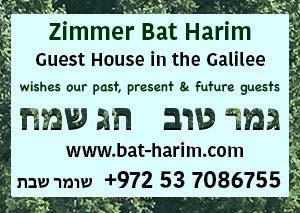


Yom Kippur provides an appropriate opportunity to contemplate our lives based upon a proper application of the Golden Mean. Gmar Chatima Tova


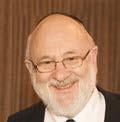
Imagine a very important project in which you were once involved. It could have been at work, in school, or in your personal life. You gave it your all. You used all the resources at your command, involv ing many other people, spending quite a bit of money, and investing a lot of your own time and energy. You were confident that you had done everything possible to guar antee the success of this project.
Then, out of the blue, the whole project fell apart. It collapsed beyond any hope of repair. Perhaps some material essential to the success of the project was no longer available. Or it might have been the sud den illness of one of your key employees that made it impossible to meet the dead line. Or, quite possibly, someone else had the same idea for a project, and got it to the market before you could.
We have all had experiences such as these, in which an endeavor we had every reason to believe would succeed just blows up in our face.
What is the typical reaction to such disap pointment? The average person just gives up, thinking that it would be futile to start all over. Only a truly exceptional individual will explore the possibilities of trying again,
of giving the entire undertaking a second chance.
In order to justify the reaction of this exceptional individual, and in the interests of making a case for the notion of a second chance, I ask you to consider the single most important project in which Moses was involved. I refer to the tragic episode in the Torah portion of Ki Tisa (Exodus, Chapter 32).
This is surely one of the highlights of Moses’ career. He ascended Mount Sinai and was given the two stone tablets, engraved with the Ten Commandments by “the fingers of God.” He came down from the mountain and no doubt imagined that the people of Israel would gather ecstati cally to receive this gift of God. Instead, he found the people dancing with abandon around the Golden Calf. Surely, his dis appointment was as great as those of us whose more mundane projects failed. He gave voice to his shattered dreams by shat tering the sacred tablets.
The despair that Moses felt at that moment was dispelled by the surprising instruction he heard from the Almighty: “Carve two tablets of stone like the first, and I will inscribe upon the tablets the words that were on the first tablets, which you shattered.” (Exodus 34:1)
The Almighty was saying to Moses, “Try again.” He was enunciating the possibility of a second chance, and He was doing so for
till the end of Sukkot

















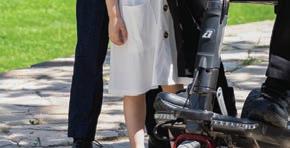
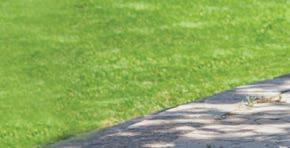


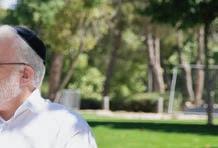


Get to shul easily on Shabbat? Load the scooter into the car’s trunk and drive to the children for Shabbat? Fly to a fun vacation abroad? With a SHABBATTO mobility scooter, anything is possible! It features an integral “mehudar” mechanism, and therefore doesn’t require tricky and costly installation, as in other scooters.


















Splits into 2 lightweight parts, for easy lifting.




Wheels like a trolley and is approved for air travel.

For more information and a free, no-obligation demo: movinglife.co.il/torah













Spacious legroom and high ground clearance.



all time and eternity.
The Sages of the Talmud tell us that this surprising instruction, this command to Moses to carve a second set of tablets, the sublime encouragement to give the people a second chance, occurred on the day of Yom Kippur. Moses shattered the tablets on the 17th day of Tammuz, and the second tab lets were given on the 10th day of Tishrei.

This is a lesser-known aspect of the signif icance of Yom Kippur, but a very important one. The essence of the nature of the day is that the Almighty gives us the opportunity for a second chance.
One wonders whether the second chance, the second set of tablets, were equal to the original one. We would understandably guess that the second was inferior to the first. After all, second chances usually are second best.
How inspiring in this regard are the words of Saadia Gaon, who eloquently contended, well more than 1,000 years ago, that the second tablets were superior to the first in no less than seven ways. Interestingly, Rabbi Saadia’s arguments are dismissed by the great commentator Abraham Ibn Ezra, who, in his commentary on Exodus 34:1 considers them to be as “trivial as a dream.”
But Rabbi Saadia’s arguments remain convincing to me, for one. He believes that the very fact that the second tablets were given on Yom Kippur, a holy day, and not on the 17th of Tammuz, a weekday, itself
speaks to their superiority.

Among the discrepancies between the first and second tablets, Rabbi Saadia notes one in particular that demonstrates the superiority of the latter. Careful students of both versions of the Ten Commandments will note that the word tov, good, does not appear at all upon the first set of tablets. Only in the second set, in the fifth com mandment, do we have the phrase, “l’maan yitav lecha, so that it will be good for you.”
Rabbi Saadia helps us expand our understanding of Yom Kippur. On the very anniversary of the giving of the sec ond tablets, we learn of the availability of a second chance. But we also learn the far more important lesson that the second chance contains an element of “good” so that we can achieve far greater levels of success than we ever imagined the first time around.
Second chances are “good,” perhaps precisely because we can learn from the mistakes which characterized the first chance, correct them, and transcend them.
As we enter this holiest day of the Jewish calendar, let all of us who have experienced failure and disappointment recognize the availability of a second chance, and a better chance.
donated by Marion & Michael Silman Ita Rochel 02-560-9125• It’s the NEW YEAR and your furniture should look NEW as well.
• PERMANENT REGLUING for all your loose & shaky furniture

• PROFESSIONAL REFINISHING AND COSMETIC WORK: Refinish any item by October 31st and receive a furniture marker FREE OF CHARGE
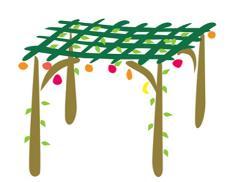

Website: www.thefurnituredoctor.co.il

Email: office@thefurnituredoctor.co.il Phone: 02-999-2418 WhatsApp: 058 787 3755

The Shulchan Aruch cites only one halachah regarding teshuvah and Yom Kippur. One who hurts his friend must ask forgiveness before Yom Kippur. What about all the other halachot relating to teshuvah? Why is this halachah singled out?
Rav Yechezkel Levenstein in his Sichot Elul notes an important truth. It is easier to gain forgiveness from Hashem than from other people. When a person is hurt, their very being has been compromised and finding the capacity to forgive is an emotional pro cess that can take time. Never assume, says Rav Levenstein, that the person you hurt will really forgive you. We must take the ini tiative; feel the pain our actions have caused and do what we can to appease our friend. Often, we act with callousness out of habit, embarrassing others, hurting their feelings, causing damage to their possessions, without being mindful of the repercussions and consequences. In Sichot Mussar, Rav Shmuelevitz explains that when one harms another, even if his intentions are noble, there is always some fallout. We learn in sefer Shmuel Aleph how Penina, with the holiest intentions, aggravated Chana to moti vate her to daven for children. And yet, the midat hadin was leveled against her with
harshness, and she lost her own children. It can be compared to one who tries to put out a fire with his hands, which, although laud able, will inevitably cause burns on those very hands. In preparation for Yom Kippur, the halachah underscores how extremely careful we must be as we navigate our inter personal relationships.
Hashem is a “salchan” and has forgiven us for the chet ha-egel
When one sins against his friend, he is also sinning against Hashem, and must do teshuvah for both. At the same time, notes Rav Salomon in Matnat Chayim, the Shul chan Aruch is not teaching us a general law of teshuvah, rather, it is a law that specifi cally pertains to Yom Kippur. The Tur notes that when we secure forgiveness from our friends, it engenders unity in Am Yisrael, and silences accusatory forces against us. In Pirkei D’rabi Eliezer, we find a description of the Satan standing before Hashem on Yom Kippur and reporting that there is no sin to be found among His people. Further, he likens Am Yisrael to angels – they both go barefoot (as we don’t wear shoes on Yom Kippur) and stand on one foot (we stand in prayer with our feet together as if on one foot), neither angel nor man is tainted with sin, and just as the angels are at peace with each other, the Jewish people
are at peace with each other. Such is the power of appeasement, as we strive on Yom Kippur to liken ourselves to the level of the angels.
We find another point on Yom Kippur highlighting the importance of harmony and fellowship. In the Haftorah, Yeshayahu tells us that it is not fasting and bowing our heads in prayer that Hashem seeks, rather to unleash the bonds of the oppressed and take care of the less fortunate and downtrodden (Yeshayahu 57:14-58,14). Hashem wants us to focus on these prime relationships even on the day that seems to be completely focused on our relationship with Hashem.
The Meshech Chochmah notes that the Kodesh Kodashim was in the portion of Binyamin, the only one of the shevatim who was not involved in the sale of Yosef Hatzadik. To assure forgiveness for the people, the Kohen Gadol did not wear the bigdei zahav so as not to remind Hashem of the sin of the golden calf. Moreover, there was no mention of mechirat Yosef. “Ki atah salchan leYisrael u’machalan le’shivtei Yeshurun.” Hashem is a “salchan” and has forgiven us for the chet ha-egel, the quintessential infraction bein adam laMakom, and a “machlan”, He has forgiven us for selling our brother Yosef, the archetypical viola tion bein adam lachavero. May we merit to bring about a complete pardon and be written in the Book of Life with all of Klal Yisrael.
In the German Colony
apartment on the ground
with
In Rehavia,
building:
Exquisite
for sale in Talbiyah, Dubnov



In the City Center of Jerusalem, high
up above everyone else,
level penthouse 165sqm

77sqm
6,100,000
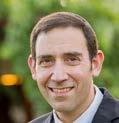
The gemara in Yoma (86b) proclaims:
הלואגה תא תברקמש הבושת הלודג
“Teshuva is glorious since it has tens redemption”. Teshuva advances redemption in the same way that any other mitzvah promotes it. Redemption did not begin in 1948, but has been a cumula tive project, stretching across centuries. Each and every mitzvah, prayer, good deed, and page of Torah studied over the past two thousand years have aggregated, and together, they all advance history toward redemption. Seventy-four years ago, the redemptive process took a spectacular leap forward and shifted from the backstage of history to the front stage. Teshuva, like any other mitzvah or religious activity, hastens redemption.
A Precondition?
Teshuva doesn’t merely contribute to
redemption, but is part of its texture. Redemption is not just a political, national, or geographical shift, but is, fundamentally, a spiritual rehabilitation. All of humanity discovers Hashem, flocks to the epicenter of Yerushalayim, and acknowledges the Jews as the people chosen to represent Hashem. Without teshuva redemption is hollow.
The gemara in Sanhedrin (97) cites the drastic opinion of Rebbe Eliezer that redemption cannot occur until the entire Jewish nation undergoes mass teshuva. Rebbe Yehoshua argues, instead envision ing an unconditional redemptive process, independent of national teshuva. Yet, even Rebbe Yehoshua concedes that mass teshuva is integral to the Messianic process. It may not be a prerequisite for redemp tion, but will be kickstarted by geula, and then will then spread to all of humanity.
So, teshuva contributes to redemption and is also the platform of redemption. But is teshuva synonymous with redemption? Are they one and the same? You would think not, and you would be right if you were assessing teshuva and geula purely empirically. They are completely different phenomena: teshuva is a spiritual recov ery which restores human beings to a
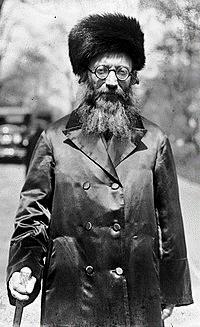
pre-sin condition of nearness to Hashem. Geula is the historical terminus, in which all of humanity recognizes Hashem, acknowledges Jewish selection, and enjoys universal prosperity. Teshuva is essential to redemption, and is possibly a precondition to redemption, but it isn’t redemption itself.
Rav Kook revolutionized teshuva and its relationship with geula by mapping its kabbalistic impact. Classically, teshuva is perceived as a recovery from individual sin or from national breakdown. If teshuva is a repair, it is not necessary under ideal condi tions without sin. Of course, human nature is frail, sin is overwhelmingly likely, and when we fail Hashem offers us the gift of teshuva to mend our ruptured relationship.
For Rav Kook, teshuva is not a repair of human failure, but is “built in” to our universe and is native to creation. Kabbalah (specifically the kabbalah of the Ari Hakadosh) illustrates that all reality wasn’t merely created by Hashem but stems directly from His essence. As Hashem is the source of all reality, there cannot be any part of the cosmos which doesn’t emanate from His essence.
During creation all reality stemmed from Hashem, but became separated from Him. Hashem is both non-physical and indivisi ble, but the created world is both physical and divided. Having been separated from Hashem into physical matter, the entire cos mos is in a state of “crisis”, and constantly craves to be reunified with Hashem. This constant surging toward “restored integra tion” with Hashem – which Rav Kook labels as cosmic ratzon - sustains reality and is
EXCITING NEW PROJECTS: Presales, Under Constructions, Ready to Move In.
Works with your cash ow!! Call for more information
BUILDINGS and VILLAS:
In the most desirable locations!
Opportunities for you to purchase buildings with building rights that will give you the sqm you need for yourself and with family/friends!!
2 Bedrooms, 1st oor, Shabbat elevator, wrap around balcony, needs renovation, currently rented out. NIS 3,500,000.
Arab style 5.5 room apartment, 155 sqm + 200 sqm garden in use, private entrance, MB ensuite, high ceilings
GERMAN COLONY - In a small building
Spacious 2 bedrooms, 80 sqm, 1st oor, light bright and quiet, balcony. NIS 3,550,000.
* In a small building, 125 sqm, private entrance, 3 exposures, Excellent potential, NIS 4,300,000!
* 5 Bdrms, 135 sqm spacious duplex, succah, private elevator.
New building - 4 bedrooms, 128 sqm, balcony, central A/C, storage room, parking, 2 elevators, Open view! NIS 5,200,000
Magnicently renovated 8+ room home with open view to Har Habayit!
Perfect for a residential home and investment!
* NEW ON MARKET! Centrally located! 4.5 rooms, low oor, elevator, MB en suite, succah, ,machsan, Immediate NIS 2,800,000
* SHLAV A - 170 sqm duplex garden apt. , open view, NIS 5,000,000!!
* SHLAV A - 4 bdrms, renovated, spacious LR DR, succah, NIS 3,500,000!
* SHLAV B - 200 sqm duplex apartment, beautiful kitchen, wrap around garden.
found in all or creation, including inani mate items. This longing for realignment with the essence of Hashem is the spiritual basis of our world.
This innate ratzon which suffuses and “drives” all reality is “kabbalistic” teshuva, and similar to all kabbalistic elements, is metaphysical and empirically untraceable. This form of teshuva has little to do with sin and little to do with Man. Attesting to a higher function of teshuva beyond our small world, the gemara comments: הבושת םלועל המדק - teshuva preceded the creation of our world. If teshuva were exclusively a response to human sin, it would have been irrelevant before the creation of our world or before Man’s first sin. Evidently, teshuva streams through all of creation and not just through human experience.
Man is the only part of creation which has a choice about this larger teshuva surge. Sin separates Man not just from Hashem, but from his world, since it hinders our ability to recognize this “cosmic alignment” with Hashem and to sync with it. When our lives become desynchronized with the overall harmony between “reality” and Hashem’s essence, we suffer physically, mentally and intellectually since we are severed from reality.
Through teshuva we resynchronize our selves with our surrounding universe and with its inner ratzon toward Hashem. By restoring alignment with Hashem, teshuva introduces health, wisdom, inner serenity and perfected human experience. Fur thermore, by realigning himself with the ratzon of Hashem and, by extension, with the world, Man provides the final piece of
a fully restored integration.
That fully integrated state is both teshuva and geula. It is the endpoint of history, and the completion of a cosmic process of restored “integration” with Hashem’s will. Teshuva isn’t a precondition for geula nor is it merely an accelerant for geula. Teshuva and geula are one and the same. When all reality aligns with Hashem, the long process of reintegration will conclude, restoring a pristine and perfect metaphys ical condition- for the entire cosmos and not just our planet. Geula is teshuva and teshuva is geula.
This broader view of teshuva transforms the psychological landscape of the teshuva process. As this inner ratzon or surge toward cosmic “teshuva” is innate to the universe, teshuva becomes an inevitable outcome. If teshuva is a purely a human experience, it is subject to the unpredict ability of human decisions. Once teshuva is broadened into an intrinsic “force” which sustains all reality, it is predestined. It is bound to occur.
Since it is bound to occur, teshuva should be navigated with confidence rather than with uncertainty or trepidation. Classic teshuva is a journey of doubt: will Hashem accept my penitence, and will He forgive my sins? Cosmic teshuva, however, is a certainty, and therefore, personal teshuva, which is a component of this larger teshuva is also certain.
Confidence in the outcome of teshuva also modifies the emotional landscape of teshuva. Classic teshuva transports us to a very dark place of remorse and mortifica tion over our sins. Our hearts are drenched
with sorrow and sadness over lost opportu nities and our exasperating weaknesses. By contrast, Rav Kook’s cosmic teshuva with its capacity to align us with all reality and with the will of Hashem, is a joyful and bright opportunity. Appropriately, his sefer is called Orot Ha’teshuva, and it depicts “radiant repentance” rather than gloomy contrition or heartbroken atonement. The sun always rises on teshuva.
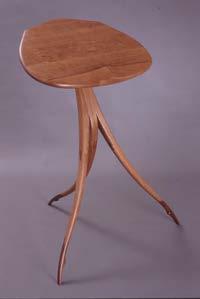
Rav Kook himself stresses that these revolutionary ideas should not supplant the classic modes of teshuva, but should provide an additional and higher plane of teshuva imagination. Broadening teshuva to a larger cosmic narrative should not replace individual teshuva experience and should not distract from authentic personal introspection. Confidence about teshuva’s outcome shouldn’t moderate the uneasiness and apprehension of standing before Hashem in judgment. The sunny and cheerful joy of “radiant teshuva” should not block us from grieving over our pain ful failures and betrayals. Just because we search for the radiance of “sunny” teshuva doesn’t mean we shouldn’t also gaze into the mirror in horror at monstrosities peer ing back at us.
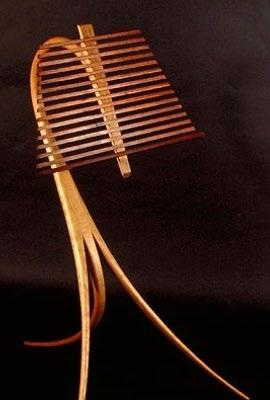
Orot Ha’teshuva allows us to transcend the particular and reflect upon the uni versal, to leap beyond the immediate and grasp the eternity of teshuva. It gives us wings to soar beyond the narrow cubicles of our own selves and our own struggles, and to cast our personal teshuva journey as part of a larger narrative of all-encom passing and universal return to Hashem. We are not alone.
Fantastic German Colony Penthouse: 300m + plus 60m terrace, 8 rooms, 2 balconies, elevator, parking, storage In addition: separate 2 room apt Beautiful Arnona House: 350m, 7 rooms, large garden, double sized master bedroom/ensuite, 4.5 bathrooms, 3 terraces, 2 storage rooms, 2 parking spots. Asking 8.96 mil NIS
Baka duplex, 180m, 6 rooms, entrance level: living room, exit to large succa balcony, 2 bedrooms, bathroom upper level: master bedroom, 2 bedrooms, 2 bathrooms
Asking 6.2 mil NIS
For details pictures and viewings call/whatsapp Hellen 0544629963 www.hellenrealestate.com
©
These days many have been rendering Perek 27 from the Book of Tehillim, which opens with the words, "יעשיו ירוא ’ה דודל"‘To David: the Lord is my light and my salvation.”
In the opening lines, David recognizes Hashem as “the stronghold of my life,” protecting him from enemies, presumably from within and without his kingdom.
David expresses his consequent lack of fear in the face of his foes, noting that ultimately the enemies are the ones that stumble and fall. We would then expect that, in his exhilaration, the king would now continue with ebullient praise to Hashem for his salvation.
Yet the mood of the psalm turns somber. David exhorts Hashem with a singular and poignant entreaty, expressed not as a passing fantasy but as an enduring sup plication. David Hamelech, whose dream was to build a House for Hashem, turns to the Almighty, begging that he “may dwell in the House of the Lord” all the days of his life.
What a strange request! For there was as yet no Beit Hamikdash! However, the notion of establishing a Beit Hamikdash was so sincere, authentic, and powerful
that, apparently, the Temple already existed in David’s mind.
What were David Hamelech’s objectives that drove him to this particular appeal? He tells us: to behold Hashem’s pleasantness, to inquire of Hashem, and to be concealed in the shelter of His Tabernacle.
On the surface, we appear to have a picture of a troubled and stressed individual seeking a tranquil escape from life’s harsh realities. Indeed, so intense was David’s yearning that he cried out to God like an orphan child with nowhere else to turn but pitifully to Hashem.
But, in essence, David Hamelech’s search was much more profound. He seeks intimacy with Hashem; he wishes for Hakadosh Baruch Hu to teach him the proper way to live his life. Thus, he would garner the strength to defeat his enemies and rejoice with all his faculties in his salvation.
In the Chassidic tradition, the search for Hashem’s light and salvation also oper ates at the personal level. For instance, as Yom Kippur approaches, we might want to implore Hashem to lift our heads above the supreme enemy within us, the Yetzer Hara.
And then, having been forgiven for our iniquities, we will, with Hashem’s help, utterly rejoice in his tabernacle during the holiday of Sukkot.
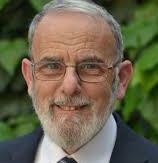


Amazing stand alone homes in OLD KATAMON, TALBIYA, BAKA, GERMAN COLONY Call for more info







New apartment for sale in BAKA 113 sqm with terrace 6.8 sqm. Shabbat elevator 4,700,000 NIS New penthouse OLD KATAMON. Underground parking & storage. 240 sqm on one floor. Large terrace & Shabbat elevator. 10,000,000 NIS


In the heart of BAKA enclosed in a magical courtyard: 3 bedrooms 2 full bathrooms one flight up. Beautiful spacious sukka terrace facing open gardens. Completely renovated with architectual design and high level finishes. Price 6,250,000 NIS
BAKA Penthouse. 154 sqm on one floor with 4 bedrooms and 2 full bathrooms. Shabbat elevator, 2 underground parking and 3 storage units!!! 25 sqm Sukka terrace off living room plus large roof top terrace. 6,800,000 NIS


Private home in BAKA. 650 sqm of land, private gated property, arab styled old house that was completely restored. Huge front garden. Building rights. Actual living space >450 sqm plus basement. Call me if you are looking for a special property.
OLD KATAMON stand alone home on a full dunam, 600 sqm living space plus 200 sqm building rights. Surrounded by a beautiful private garden. Parking and additional basement area. Call me for more info.

Wishing everyone a wonderful sweet year


Ha’azinu is the second last parsha in the Torah. It is one chapter of 52 verses, mak ing it one of the shortest in the Torah.
All but 8 verses consist of the song of Ha’azinu. The song is written in the Torah in the form of a poem with 2 parallel col umns. The Torah itself calls it Hashira Hazot, this song; 5 times in last week’s par sha and one time again this week.
The poem of Ha’azinu was the song the Leviim sang in the Beit Hamikdash during the Mussaf offering on Shabbat. We know the Leviim sang a psalm from Tehillim as the Shir Shel Yom – the daily song, sung accompanying the morning daily offering. They also sang a song during Mussaf of Shabbat and that song is Ha’azinu.
But they did not sing the entire song each week. Ha’azinu was divided into 6 sections – exactly the way we divide the aliyot. One section was read per week, the entire song in 6 weeks. Perhaps it was spread out over 6 weeks to express its theme, Jewish history. Jewish history spans millennium, hence it is sung over 6 weeks in the Temple.
1st aliya (Devarim 32:1-6) Lis ten heavens, listen earth. G-d is Just, Faithful. I will call in the
name of Hashem, ascribe greatness to our G-d.
The song is a rhythmic poem of couplets, or at least begins that way. These 6 verses are the introduction. What we are saying in this song is cosmic – give ear, heavens and earth. He is Great and Just. We, his children, are twisted.
2nd aliya (32:7-12) Remember those days. While nations were arranged, you, Jewish people became His lot. He found you, the apple of His eye. Spread His wings over you. He Himself cares for us.
These 6 verses introduce the dawn of Jewish history. These are tender, wistful remembrances. A capsule of Jewish history and how G-d relates to us must start with tenderness. This aliya is a smile, a descrip tion of those carefree days of faithfulness.
3rd aliya (32:13-18) He placed you in the heart of the Land, fed you honey, olive oil, butter, with livestock aplenty and wine. Yeshurun got fat and kicked. Left Him and sought others – demons, new powers and forgot Him.
In these 6 verses, things start to go awry. The verses no longer end symmetrically, at the end of the second column. Now they begin to end in the first column, in the mid dle of the line, off balance. The song is off kilter now. The plenty in the Land turned us fat. And rebellious. Bad enough to leave Him. But forget Him? This is not what your forefathers sought.
4th aliya (32:19-28) I will hide my Face from them and see what happens then. They angered Me. I will send aggressors to anger

them. My anger burns. I will take it out on the Land. I will scatter them, with no trace of their memory. They won’t even under stand that I am behind this, for they lack all insight.
This is no longer a 6 verse aliya like the first 3, but 9. The verses no longer end sym metrically, at the end of the second column. Now they end in the first column – off bal ance. As if to say, the world is not working the way it ought to, off kilter; things start to go awry. The song switches now from Moshe’s voice to G-d’s voice. Moshe no lon ger describes Him – G-d speaks now in the first person. Moshe can’t describe this for once G-d hides his Face, no man can under stand His ways; G-d needs to describe the hiding of His Face Himself. The Ramban comments that this is actually a prediction of the exile of the 10 tribes, the Kingdom of Israel. Their memory is gone. A full 10 tribes of the Jewish people have been lost forever. With no happy ending. While the history of the Jewish people will have many tragedies, the loss of 10 tribes of our people, with no trace is a tragedy of epic proportions.
5th aliya (32:29-39). Oh, would the people understand the con sequences. One could not pursue 1000 or 2 pursue 10000 were it not for our G-d. The oppressors drink the bit ter vintages of Sodom and Gemorrah. G-d will eventually relent of this abandonment of His people, while the nations have none to their rescue. I am the one who gives life and takes it; none escapes My hand.
The song turns back to Moshe’s voice. The plain meaning of some of the verses in this aliya is apparent, others quite obscure. The
last verse, with the return of G-d’s voice, also returns to ending in the second column. Structure has returned, order is back. This aliya is striking in referring both to the Jew ish people and to the others, what we have been referring to as oppressors. While we have been disappointing, we have an end of reconciliation. But when it comes to the other nations and their evil and rebellious ness, Moshe cedes the floor back to G-d. It is not for us to speak of the justice due others. That is His work not ours.
6th aliya (32:40-43) Arrows of blood, a flesh consuming sword, the payment of the enemy. Sing nations of His people, for in the end there is retribution and the Land atones for His people.
3 verses are in the first person with G-d speaking of ultimate justice, vengeance against My enemies, those that hate Me. This aliya is not for the faint of heart. We squirm at the notion of a vengeful G-d. As we squirm at “Shfoch chamatcha”, pour out Your wrath on the nations, the verses we say when we open the door at the seder. But Moshe insisted that we recite this song, seeming to feel this song will guide us in history. Divine justice, reward and yes, punishment is part of the order of the world. We repeat it at the seder when we look to the culmination of history and we repeat it in Akdamot that we say on Shavuot in looking to the future. We don’t delight in His meting out justice. Though we acknowledge that justice, Divine justice is to be part of the end of days. But the song does not end with the retribution. It ends with all peoples singing – a universal end of days.
7th aliya (32:44-52) Moshe brings this song, together with Yehoshua to the people. He instructs them to take it to heart and to command it to their children. It is not empty words but rather is your life. Then Moshe is told to ascend Har Navo where he is to die.
The verse states that Hashem spoke to Moshe of his impending death “b’etzem hayom hazeh”, on that very day. The sim ple meaning is that on the very day that this song was complete, Moshe’s life too had served its time and was too to be com pleted. But Rashi quotes the Midrash that prefers to translate this as meaning “in broad daylight”. Moshe’s ascension to the mountain and his death is to be public, in full view. As if to avoid the objections of the people. As much as the people would want to prevent this – Moshe’s death is inevita ble. As devastating as the loss of Moshe’s leadership is, it is a part of life. The cove nant is with our people, transcending any one leader.
echoing the weekly Torah reading, where Moshe delivers his parting words to the Jewish nation in song form.
David’s song expresses gratitude to G d for saving him from all his enemies. He starts with the famous words, “The L-rd is my rock and my fortress.” He goes on to describe the pain and hardships he encountered and reiterates that he always turned to Hashem in his moments of dis tress. He recounts G d’s reaction to those who tormented him: “The Lord thundered from heaven; and the Most High gave forth His voice. And He sent out arrows and He scattered them, lightning and He discomfited them. . . I have pursued my enemies and have destroyed them; never turning back until they were consumed.”
The King attributes his salvation to his uprightness in following G d’s ways: “The Lord rewarded me according to my righteousness; according to the cleanness of my hands He recompensed me...”
22:1-51

This week’s haftorah describes the song King David composed in his old age,
The song ends with David’s expression of thankfulness: “Therefore I will give thanks to You, O Lord, among the nations, and to Your name I will sing praises. He gives great salvation to His king, and He per forms kindness to His anointed; to David and to his seed, forever more.”
As you learn about some of the good we’ve done, imagine how much negative we’ve prevented.
INFO@ERETZHAKODESH.ORG
 SHEMINI ATZERET/ SIMCHAT TORAH - V'ZOT HABRACHA
SHEMINI ATZERET/ SIMCHAT TORAH - V'ZOT HABRACHA

 SHEMINI ATZERET/ SIMCHAT TORAH - V'ZOT HABRACHA
SHEMINI ATZERET/ SIMCHAT TORAH - V'ZOT HABRACHA





NEW LISTING! Luxurious garden apartment on a small lane of Old Katamon - 340m built on 2 levels, 8 rooms, separate unit with separate entrance, high ceilings, full of charm, very quiet and bright, 130m private garden, top of the line finishes, close to the parkDEBORAH - 054-4804767
NEW LISTING! Beautiful new penthouse in Greek Colony- 190m with 80m terraces, succah, beautiful views, 5 rooms, elevator, parking, renovated at very high standard, spacious living areas and huge kosher kitchen MAYA – 054-6650184
For Serious clients only! In the Orient Hotel unique 280m apartment on one level with large succah terrace, top standard, all furnished, 7 rooms, all facilities of the hotel, pool, spa DEBORAH - 054-4804767

Private small building in Baka - Shimshon St. 300m with additional building rights, huge private garden, divided as 3 units so can be private house of 3 separated apartments, very attractive price DEBORAH - 054-4804767
On the exquisite Elcharizi St.,Rechavia new project, 280m penthouse, 100m terraces, finishes and layout according to buyer requests! DEBORAH - 054-4804767
Ben Maimon St. Duplex new apartment, 5 bedrooms, 4 ensuite, 4 terraces, private parking, Shabbat elevator, all renovated, 3 exposures, very sunny! DEBORAH - 054-4804767
In a small lane of the German ColonyGarden apartment with private entrance, 250m with private garden, parking, high ceilings, in an Authentic beautiful 3 apartment building MAYA – 054-6650184
On a small lane of Baka, beautiful 190m penthouse, 6 rooms, 30m terrace to greenery views, parking, Shabbat elevator, small MAYA – 054-6650184
Talbieh - on the exquisite Balfour St, 300m apartment on one level completely renovated at top standard, succah terrace, parking DEBORAH - 054-4804767
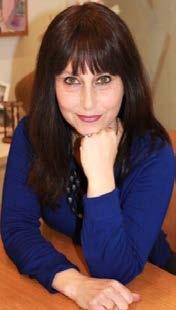
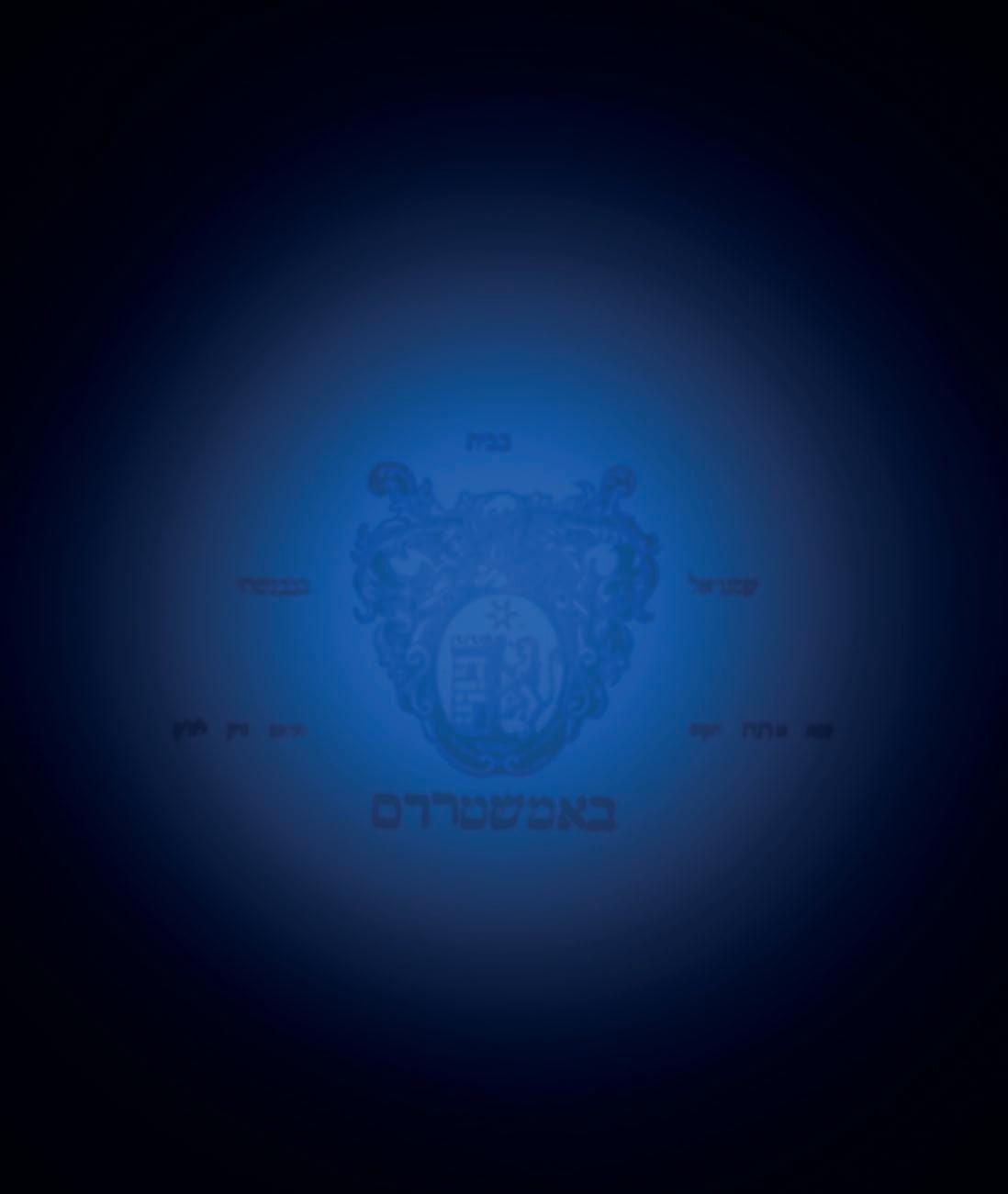

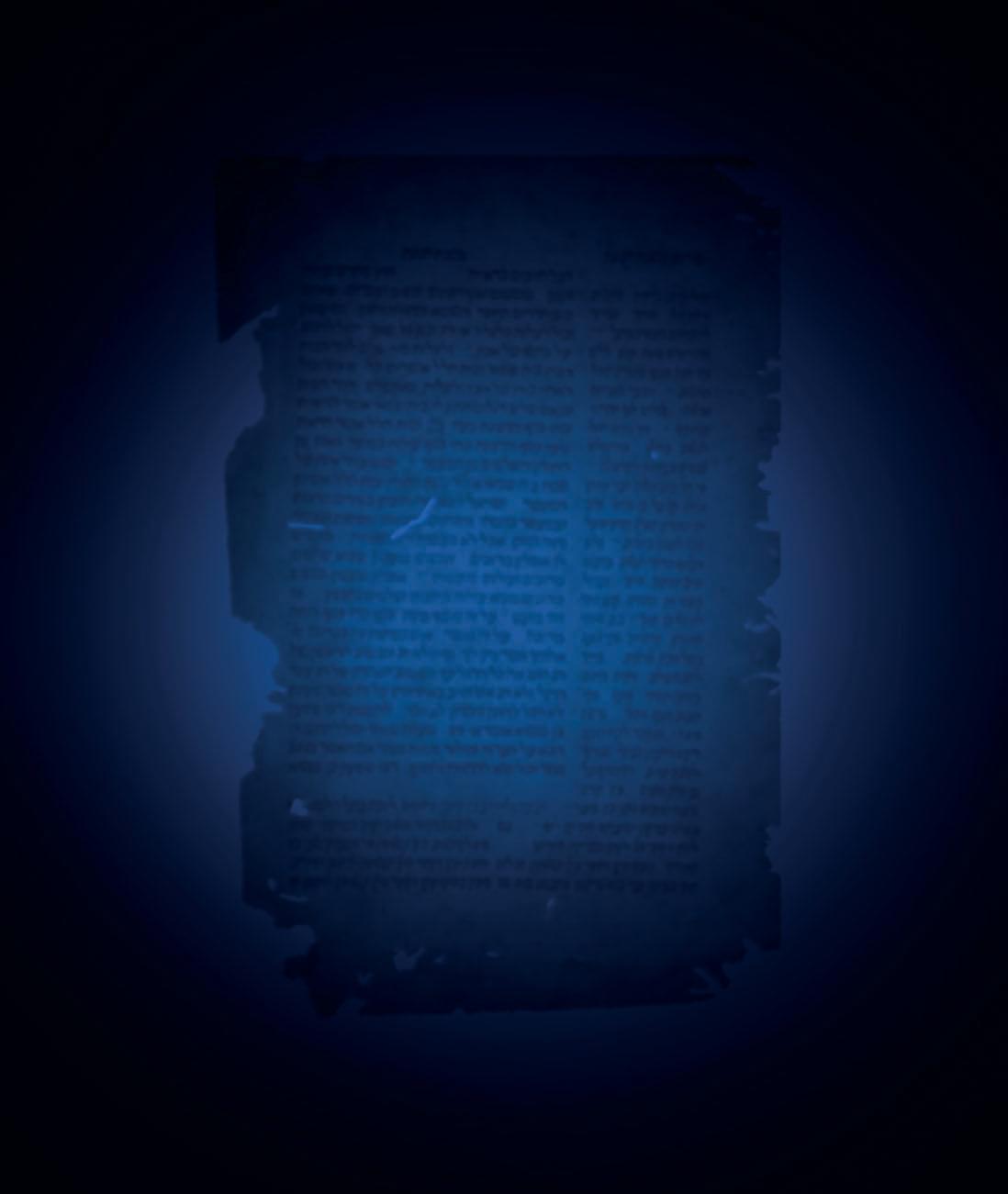
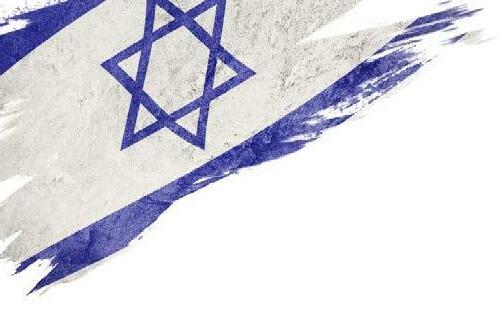
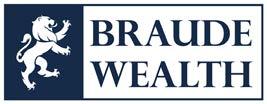


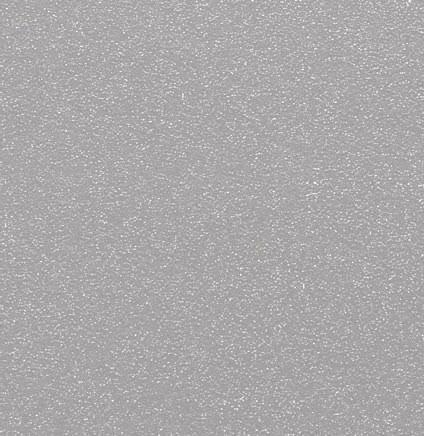
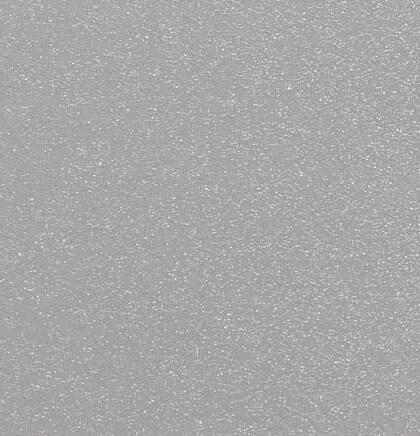

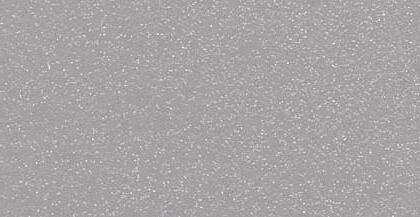









United Hatzalah of Israel is the largest independent, non-profit, fully volunteer Emergency Medical Service organization that provides the fastest and free emergency medical first response throughout Israel. This year's sale will go toward providing a volunteer medic with an ebike, a fast-response vehicle that will allow them to reach the site of an emergency as fast as possible.


contact for questions and purchases
Ezra: +972 53-230-8481

Isaac: +972 53-550-4517


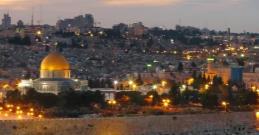




 KIPPUR
HA'AZINU
SUKKOT
SHEMINI ATZERET/ SIMCHAT TORAH - V'ZOT HABRACHA
KIPPUR
HA'AZINU
SUKKOT
SHEMINI ATZERET/ SIMCHAT TORAH - V'ZOT HABRACHA




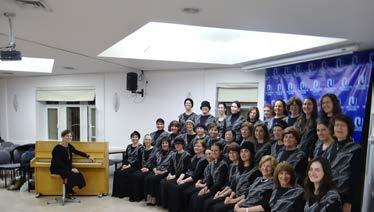
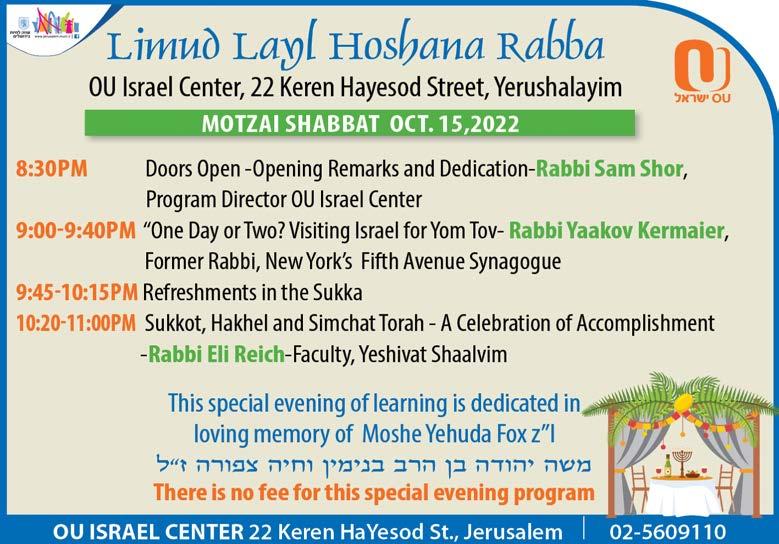
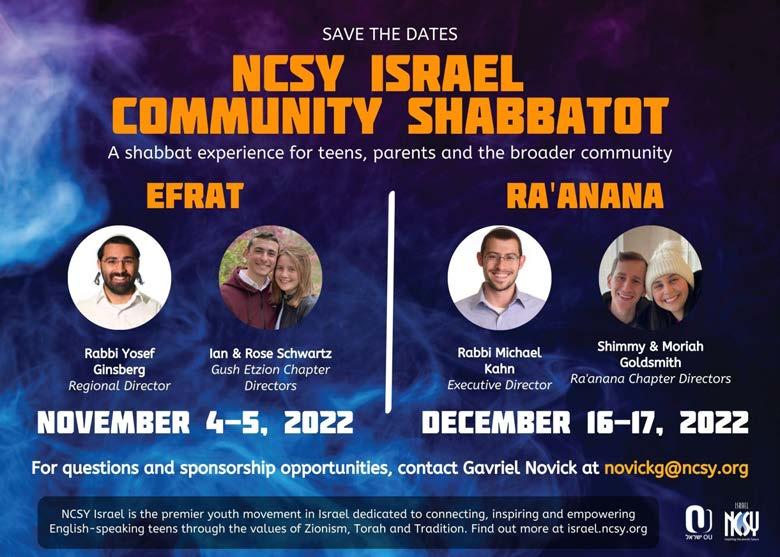

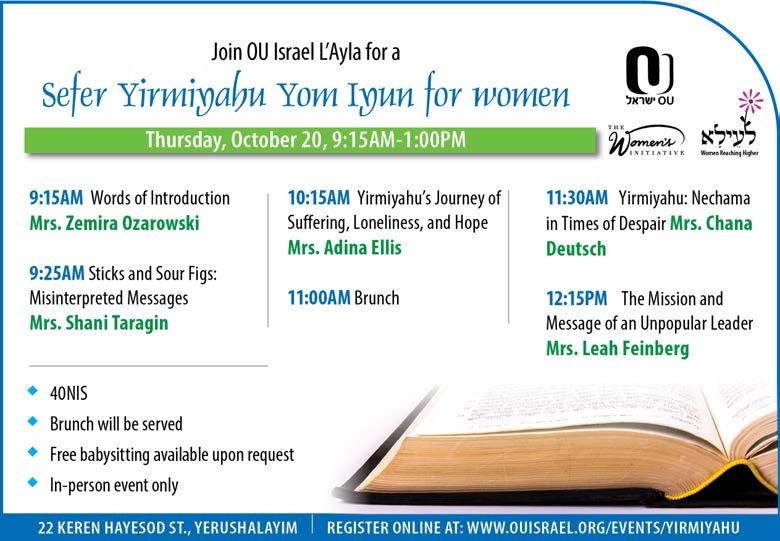 ATZERET/ SIMCHAT TORAH
ATZERET/ SIMCHAT TORAH
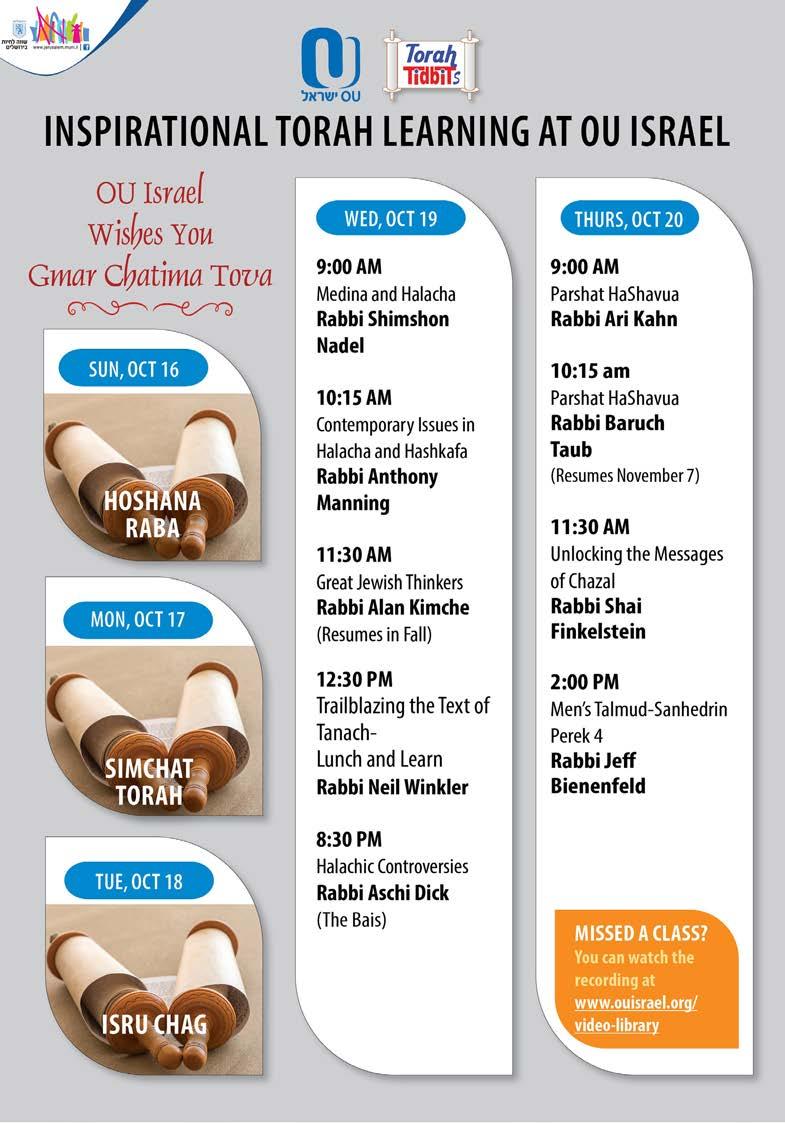
Come help yourself to a bottle at 52 King George.
In loving memory of Yoni’s wife
Walking down King George St. in Jerusalem and want a cold bottle of water?
Come help yourself to a bottle at 52 King George.

Tziporah a"h, a true Eishes Chayil, always full of chessed, kindness and laughter, and brought life and strength to so many people, that she touched! She was like Aron, who loved peace and pursued peace.


Yoni thanks Hashem for having the opportunity of having Tziporah in his life, to learn of her caring, patience and happiness, to overcome her challenges. May Tziporah's Neshama be a light onto the world, in a time of darkness, and may her Neshama shine to Gan Eden. Yoni misses Tziporah with tears in his eyes, as Hashem gave him a gift, a crown jewel, now he returns her to Hashem.With thanks and Toda. Love, Yoni
In loving memory of Yoni’s wife Tziporah a"h, a true Eishes Chayil, always full of chessed, kindness and laughter, and brought life and strength to so many people, that she touched! She was like Aron, who loved peace and pursued peace. Yoni thanks Hashem for having the opportunity of having Tziporah in his life, to learn of her caring, patience and happiness, to overcome her challenges. May Tziporah's Neshama be a light onto the world, in a time of darkness, and may her Neshama shine to Gan Eden. Yoni misses Tziporah with tears in his eyes, as Hashem gave him a gift, a crown jewel, now he returns her to Hashem. With thanks and Toda. Love, Yoni
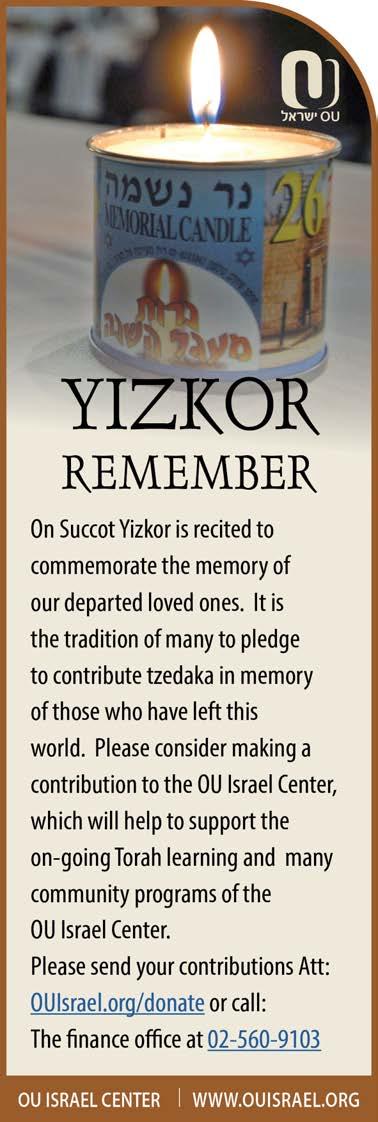
To help refill the supplysend tax deductible donations for Be’er Tziporah a"h Bottled Water Gemach to Chabad of RechaviaRabbi Yisroel Goldberg email Rabbi@JerusalemChabad.org 02 800-1717
To help refill the supplysend tax deductible donations for Be’er Tziporah a"h Bottled Water Gemach to Chabad of RechaviaRabbi Yisroel Goldberg email Rabbi@JerusalemChabad.org 02 800-1717

www.JerusalermChabad.org/DonateShekels
www.JerusalermChabad.org/DonateShekels
SIMCHAT TORAH - V'ZOT HABRACHA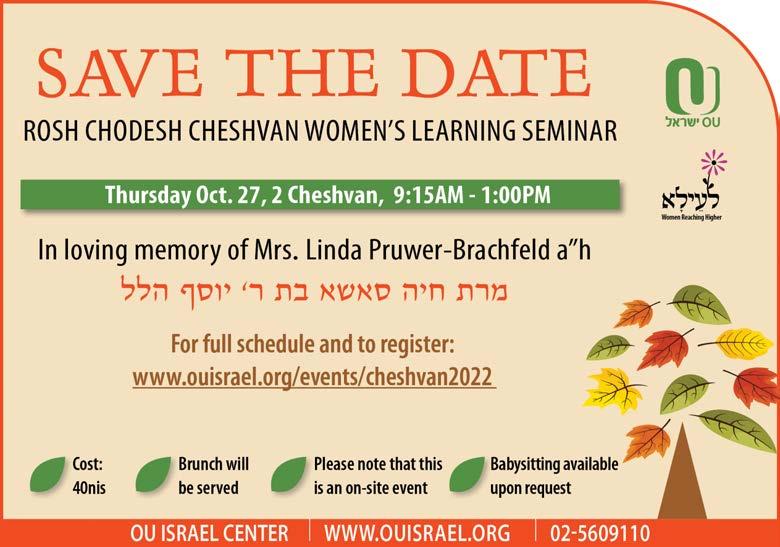

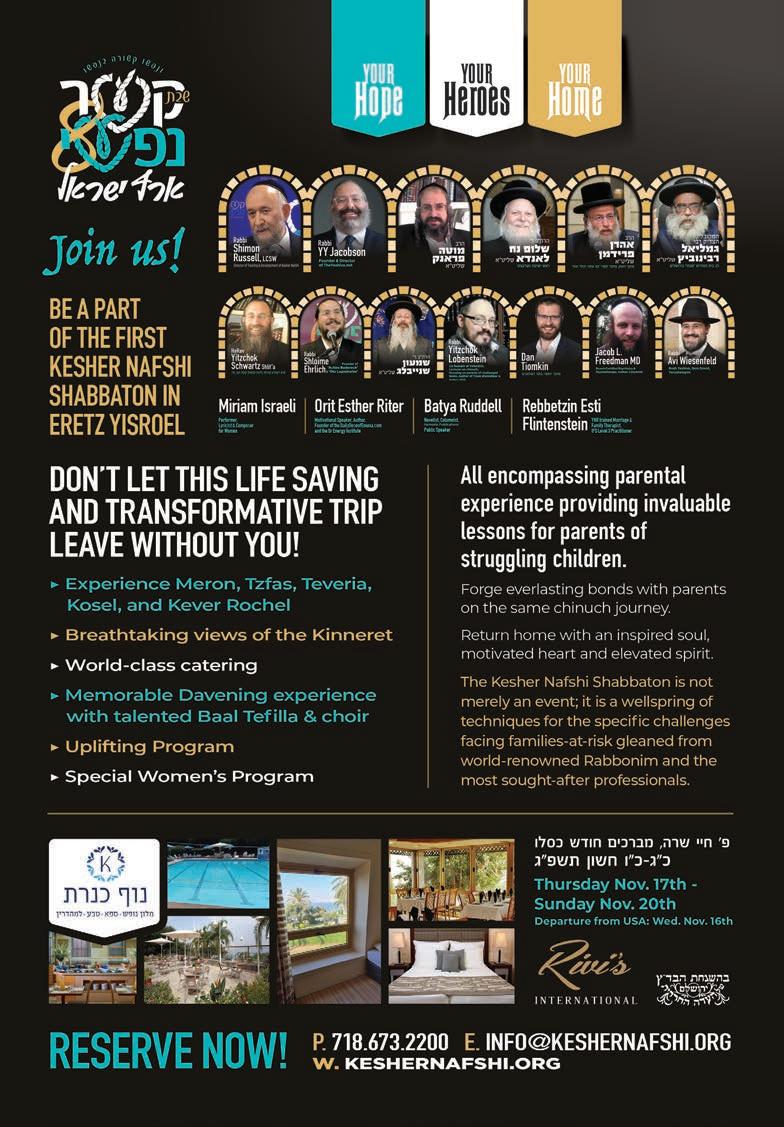 SHEMINI ATZERET/ SIMCHAT TORAH - V'ZOT HABRACHA
SHEMINI ATZERET/ SIMCHAT TORAH - V'ZOT HABRACHA

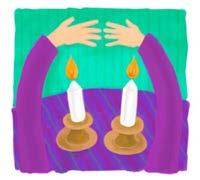
When entering the Sukkah we invite the Ushpizin - guests to join
Customs vary regarding these prayers.

Before leaving the Sukkah for the final time at the end of Hoshana Rabah one can recite the following prayer:
Sukkot Day 1
Vayikra 22:26 - 23:44
Maftir Bemidbar 29:12-16
Haftorah Zecharia 14:1-21
Shabbat Chol Hamoed:
Kohelet is read, Shmot 33:12 -34:26
Maftir Bamidbar 29: 26-31
Haftorah Yechezkel 38:18- 39:16
Shmini Azeret/ Simchat Torah
Torah #1- V’zot HaBracha, Devarim 33-34
Torah #2- Bereshit 1- 2:3
Torah #3 Maftir
Bemidbar 29: 35 - 30:1
Haftorah Yehoshua 1


Even though LULAV is only one of the Four Species - it is the most prominent; it is named in the B'RACHA and the mitzva is referred to as N'TILAT LULAV.
*Remember: Lulav & Etrog are not taken on the Shabbat during Sukkot.
The mitzva of the Four Species [L&E] is fulfilled while STANDING. The mitzva of L&E is to take the Four Species in hand together. Therefore, one gets ready to do the mitzva by holding the Lulav “bundle” in the right hand and the Etrog in the left, but does not hold them together, and preferably has specifically in mind NOT to fulfill the mitzva YET; then says the bracha (AND shehecheyanu the first time as well), and THEN holds the L&E TOGETHER and UPRIGHT with the intention of fulfilling the mitzva.
After the bracha/brachot and the joining of the L&E, the mitzva is done. The custom is to wave the L&E in six directions. Keep the L&E upright; hold them close to the chest and then extend your hands forward. With the L&E in front of you, gently shake them. Bring your hands back to your chest. Repeat in the same direction two more times. Now do the same thing three times to the right. Then three times behind you. Try not to turn too much in the direction of the NA’ANU’IM (waving); rather face front as best as possible and move the L&E in the different directions. Then to the left three times. Up three times. Down three times. Extend, shake, retract. Three times in each of the six directions.
Another custom for the order of directions for NA'ANU'IM: SOUTH, NORTH, EAST, UP, DOWN, WEST
The Hoshana prayers are recited with the Arba Minim in hand (except for on Shabbat). The Ark is opened and a Torah is removed and held at the Bimah. One may say Hoshanot at home as well.
No Hakafa is made on Shabbat nor is a Torah taken from the Aron and brought to the Bima, as is done during the week. The Aron is opened and we say...
L§p©r©n§l ,`¨p§r©WFd
,Ep«¥l£`FB L§p©r©n§l ,`¨p§r©WFd
,d¨p§pFb§l Li«¤R©M xi¦v§i m¨c¨` ¨Y§r«©WFd§M .`¨p§r©WFd o¥M ,d¨pi¦p£g©e ,W¤t«Ÿp§l i¦ri¦a§W xEa¨l Ep§E¦M d¨r¥C ,W¤t«Ÿg mi¦E©w§n o¨Iªv§n iFB ¨Y§r«©WFd§M .`¨p§r©WFd o¥M
i¥n l©r d¨x¨n§A ¨Y§n«©U wŸg§e ,zFg§p©d§l o`ŸS©M ¨Y§b«©d¦p m¨r¨d ¨Y§r«©WFd§M .`¨p§r©WFd o¥M ,zFgªp§n m¤g«¤l i¦y¦X©A Eh§w¨l§e En§k¨g ,d¤p£g©O©A oi¦q x©A§c¦n§A Li«¤cEa§f ¨Y§r«©WFd§M .`¨p§r©WFd o¥M ,d¤p§W¦n
Fn«¨l d¨cF«d§e m¨gŸM x©X¦i ,m¨r¨C©n§A d¨p¨k£d ExFd Li«¤lEt§h ¨Y§r«©WFd§M .`¨p§r©WFd o¥M ,m¨rFx ,x¨n¨p `Ÿl Fgi¥x§e Fpi¥r K©t¨d `Ÿl ,x¨OªW§n©d o¨n b¤p«Ÿr§A El§M§lªM ¨Y§r«©WFd§M .`¨p§r©WFd o¥M zFIªW§x Ez§a¨W§e Eg«¨p ,Ex«¨n¨B z¨A©W zF`§U©n i¥h§R§W¦n ¨Y§r«©WFd§M .`¨p§r©WFd o¥M ,Ex«¨n¨W mi¦nEg§zE W¥C©w§l xFn¨W§e xFk¨f o©i§p¦r ,i¦ri¦a§x xEA¦c§A Er§n§Wªd i©pi¦q ¨Y§r«©WFd§M .`¨p§r©WFd o¥M ,i¦ri¦a§W ,s¥T©z§l z¨A©X©A D¨Y§c¦x c©r Ex«¨S ,s¥T©d§l r©a«¤W Fgi¦x§i Ec§TªR ¨Y§r«©WFd§M .`¨p§r©WFd o¥M d¨r§a¦W m¨b§b¨g§A LE«S¦x ,mi¦n¨lFr zi¥a§A FO©r§e z¤l«¤dŸw ¨Y§r«©WFd§M .`¨p§r©WFd o¥M ,mi¦n¨i d¨r§a¦W§e mFi b¨g¤A m¨`§x¨w§A L§z¨xFY ,mFi§c¦t§l d¨lFb i¥lFr mi¦a¨W ¨Y§r«©WFd§M .`¨p§r©WFd o¥M ,mFi d¨r§a¦W l¨M a¨lEl oi¦l§hFp ,W¨Cªg§n©d i¦p¥W o©i§p¦a§A Li¤g§O©U§n ¨Y§r«©WFd§M .`¨p§r©WFd o¥M ,W¨c§w¦O©A cFqi¦l `¨vFn zFI¦A§xªn ,mi¦g§c©n z¨A©W d¨a¨x£r hEA¦g ¨Y§r«©WFd§M .`¨p§r©WFd o¥M ,mi¦gi¦P©n ©g«¥A§f¦n L§l i¦t«Ÿi o¨z¨xi¦h§t¦A ,mi¦q§N©r§n zFdFa§bE zFkEx£`©e zFM©x§A ¨Y§r«©WFd§M .`¨p§r©WFd o¥M ,mi¦q§N©w§n ©g«¥A§f¦n Epi«¥pi¥r§e D¨i§l Ep«¨` Ep«¨NªM ,mi¦P©W§n `Ÿl§e mi¦l£g©i§nE mi¦cFn ¨Y§r«©WFd§M .`¨p§r©WFd o¥M ,mi¦pFW D¨i§l Fd¨e i¦p£` mi¦p§pFx ,d¨p¨p£r©x§A mi¦a§aFq Li«¤a¨v£g©n a¤w«¤i ¨Y§r«©WFd§M .`¨p§r©WFd o¥M ,`¨P d¨ri«¦WFd d¨lFr lEt¨M z¨A©W o©A§x¨w ,d¨gEp§n¦A mi¦z§x¨W§n mi¦fi¦x§f li¥g ¨Y§r«©WFd§M .`¨p§r©WFd o¥M ,d¨g§p¦nE mFi§l xi¦W xFn§f¦n mi¦x§nF` ,z¨A§x©d§l m¨p¨kEc l©r Li«¤I¦e§l ¨Y§r«©WFd§M .`¨p§r©WFd o¥M ,z¨A©X©d m¥vi¦l£g©d§e m¥v§xE ,oFr§W§r©Y§W¦i ci¦n¨Y Li«¤zF§v¦n§A Li«¤nEg¦p ¨Y§r«©WFd§M .`¨p§r©WFd o¥M ,oEr¥W¨E¦i z©g«©p¨e d¨aEW§A ,aŸw£r©i i¥l¢d¨` zEa§W ai¦W¨z§e aEW¨Y ,aŸw£r©i i¥h§a¦W zEa§W ¨Y§r«©WFd§M .`¨P d¨ri«¦WFd§e ,zFr¨WFn§l l¥` ,zFrEW§i i¥kFg§e ,zF§v¦n i¥x§nFW ¨Y§r«©WFd§M .`¨P d¨ri«¦WFd§e
Each phrase is preceded and followed by `¨p§r©WFd [Fd].z©a¨a§M d¨xEv§p mF`[Fd]
.z©ai¦W§n W¤t«¤p z¨c§A z¤p«¤pFA[Fd]
.z¨A©W zFk§l¦d z¤x«¤nFB[Fd]
.z¨A©W z©`§U©n z¤W«¤xFc[Fd]
[Fd]
[Fd]
[Fd]
.z¨A©W mEg§Y m¦i«©R§l©` z©r«©aFT©d[Fd] [Fd]
.z¨A©X¦n l¤b«¤x z©ai«¦W§nE[Fd]
.z¨A©X©A z¤n«¤I©w§n xFn¨W§e xFk¨f[Fd]
[Fd]
[Fd]
[Fd].z¨A©W z©`i¦A x¥d©n§l d¨W«¨g[Fd]
[Fd].z¨A©X©l d¨X¦X¦n lŸM z©g«©xFh[Fd]
.z¨A©W zFl§M c©r z¤p«¤Y§n©nE z¤a«¤WFi[Fd]
[Fd]
[Fd].z¨A©X©l d¨`§xFw b¤pŸ«r¨e cFa¨M[Fd]
.z¨A©X©A z¤t«¤N©g§n zEq§kE WEa§N[Fd]
.z¨A©X©l d¨pi¦k§n d¤Y§W¦nE l¨k£`©n[Fd]
[Fd]
[Fd]
[Fd].z¨A©X©l z¤n«¤r©p§n mi¦c¨b§n m©r«Ÿp[Fd]
.z¨A©X©A z¤n«¤I©w§n WŸl¨W zFcEr§q[Fd]
.z¨A©X©A z©r«©vFA zFx¨M¦k i¥Y§W l©r[Fd]
[Fd]
[Fd]
[Fd].z¨A©X©A zFIªX§x r©A§x©` z¤h«¤xFR[Fd]
.z¨A©X©A z¤w«¤l§c©n x¥p z©w«¨l§c©d iEE¦v[Fd]
.z¨A©X©A z¤W«¤C©w§n mFI©d WEC¦w[Fd]
.z¨A©V©A z¤l«¤N©t§n r©a«¤W o¤p«¤x[Fd]
[Fd]
[Fd]
[Fd]
"To You I will sacrifice a Thanksgiving Offering, and in G-d's name I will call."
Gimatriya of this pauk is 1176 - the same as: .`¨p§r©WFd ,Epi«¥dŸl'¡` L§p©r©n§l ,`¨p§r©WFd
zFxEt§q .zFrEW§Y o¥zFp .zFr¨n§W¦p Li«¦R¦n
.zFrEW§i l¥rFR .zFri¦n§W©n zEc¥r .zFr¨n§W©n
.zF`ªW§Y W¤b«¤x .zFrEW§Y z©i§x¦w .zFr¨WFp wi¦C©v .zFrEW§z¦l Wi¦g¨Y .zFr¨W WŸl¨W
The following is said after each day's Hakafa (Shabbat has
own), and after the 7th Hakafot of Hoshana Rabba. It is said back at one's
in
.`¨p§r©WFd o¥M ,©g«¥A§f¦n si¦T©d§l d¨a¨x£r i¥q§nFr ,©g«¥A§f¦n i¥a§aFq ¨Y§r«©WFd§M
.`¨p§r©WFd o¥M ,r©WFp§e s©` oFx£g©A z¤W«¤l§R x¥r¦v ,r©W§tªd§M oFx¨` i¥`§l¦R ¨Y§r«©WFd§M
.`¨p§r©WFd o¥M ,¨Y§g©NªW m¨p£r©n§l mEg©x ,¨Y§g«©N¦W d¨l«¤a¨A zFN¦d§w ¨Y§r«©WF d§M
.`¨P d¨ri«¦WFd§e
i¥h§a¦W zEa§W ¨Y§r«©WFd§M
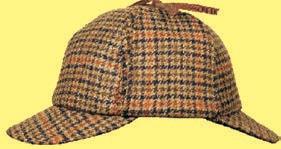


 KING GEORGE
KING GEORGE

VAYIKRA 22:26-23:44
1st aliya (Vayikra 22:26-23:3)
An offering may not be brought in the first 7 days of the ani mal’s life. An animal and her offspring may not be killed on the same day. A thanksgiving offering must be eaten within one day. Do not profane My Holy Name, rather sanctify My Name, the One who brought you out of Egypt.
The Torah reading for the first day of Sukkot is the whole of Chapter 23 in Vay ikra, which lists the entire yearly cycle of holidays. Curiously, we begin 8 verses before that chapter with a paragraph describing various rules concerning offerings. But it is the last line that is the connection to Yom Tov. Sanctify My Name because it is for that reason that I brought you out of Egypt. The observance of the holidays has historical meaning to be sure. But the story is not the history; the story is the relationship. I brought you out to be the sanctifiers of My Name. You are My reflection in this world. And as such, the tone is set for the description of the
holidays, peering beyond their historical meaning to the overarching meaning; His reflection in this world.
2nd aliya (23:4-14) Pesach is on the 14th of the 1st month. For seven days consume Matza. Day 1 and Day 7 are holy, no work is to be done. On the day after the Yom Tov, bring a measure of the first harvest of barley as an Omer offering, accompanied by a sacri fice. The new grain may not be consumed until this Omer is offered.
The description of the Omer offering seems out of place. Though each holiday has an offering, the emphasis of this section is not offerings but holidays, Chagim. The day the Omer is brought is not a Yom Tov. But, similar to the holidays, it has a specific calendar date. Hence this section would be accurately called, not a list of Chagim, or holidays, but a list of calendric events.
3rd aliya (23:15-22) Count 7 full weeks from this offering and on the next day, the 50th bring 2 baked breads of chametz accompanied by sacrifices. The Kohen shall wave these 2 bikkurim breads. That day is a Yom Tov, no work is to be done. When harvesting your fields leave the corners and gleanings for the poor and foreigner.
The 2 breads brought on Shavuot are the bookends of the Omer. The Omer was bar ley, brought the 2nd day of Pesach. The 2 breads are wheat, chometz, bread, the first wheat offering of the new crop brought on Shavuot. The Omer offering allowed con sumers to now be able to use the newly harvested grains. But in the Temple, the new grain cannot be used until 7 weeks
later, with the offerings of the 2 breads on Shavuot.
The contrast of the matza that we eat on Pesach and the chametz of this bread offering on Shavuot invites our curiosity. Perhaps it expresses 2 qualities but that need to be in their proper time. Pesach is the holiday of history. In history you need to move, move fast. Don’t let the dough rise. Seize the moment; don’t miss it. Speed. But on Shavuot, in the context of holy offerings, patience is king. Wait. 7 weeks. Patience. Let the dough rise, become chometz. Wait. While history demands speed, holiness inheres in restraint.
4th aliya (23:23-32) The first day of the 7th month is a day of Ter uah, a Yom Tov. But the 10th day of the month is Yom Hakippurim. Afflict yourself for it is a day of atonements. It is a
holy day, no work may be done. Afflict yourself from the 9th in the evening, eve ning to evening.
5th aliya (23:33-44) The 15th of the 7th month is Sukkot for 7 days. The first day is a Yom Tov as is the 8th day. Take a lulav and etrog and rejoice for 7 days before G-d. Dwell in Suk kot for 7 days so you will know that G-d had your ancestors dwell in Sukkot when leav ing Egypt.
Sukkot rounds out the year of Chagim. It is the end. As such, it is a celebration not only of itself but a celebration of the com pletion of the Chagim of the year. The lulav is the expression of appreciation for the rich life we enjoy, a life punctuated by ren dezvous with the Divine. Our greatest joy is that we stand before the King, rejoicing before G-d. That is true inner joy.

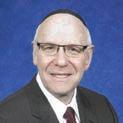
The very essence of Chag HaSukkot is the mitzvah of dwelling in this temporary “hut”, for, by doing so, we would remind future generations of the desert “experience”. This command is found in the Torah’s words: “BaSukkot tesh’vu shiv’at yamim…” – “You shall dwell in the Sukkah for seven days”. The Mishna in Masechet Sukkah offers two opinions as to the significance of the “hut”. R. Akiva claims that the sukkah recalls the booths in which the Israelites dwelled during the 40 year sojourn in the desert while R. Eliezer argues the sukkah represents Hashem’s protective clouds that surrounded the nation during that period.
The disagreement between these two great sages may not necessarily be a dis agreement at all! One can accept both views as being correct with the difference rooted only in which opinion is the primary one that would demand our observance. In analyzing the essence of the conversation, it seems that the Rabbis are considering what lesson is to be passed down to the future generations through our obser vance of the mitzvah. The Torah clearly states what the purpose of the mitzvah is: “So that your future generations shall know that I placed B’nai Yisrael in sukkot when I took them out of Egypt...” These ancient scholars debate what exactly the impactive message of the Sukkah is, a message that we are charged to pass down to the
future generations. Are we to pass on the message that Israel dwelled in huts of their own making during their sojourn in the desert or that Hashem protected His nation beneath His divine cloud cover over those years?
We might understand these different approaches as a difference in understand ing what was regarded as essential for B’nai Yisrael to survive the difficult years of wandering in order to reach their final destination. R. Eliezer posits that without G-d’s protection through the desert years, the people would have not reached the Promised Land to experience the comple tion of their redemption from Egypt. R. Akiva certainly agrees, but he argues that the message for future generations was that, without B’nai Yisrael building their own Sukkot, without the people involv ing themselves in the redemptive process, there arrival into Eretz Yisrael alone would not have brought a true redemption, for they could not depend on Hashem’s mir acles forever.
This day’s haftarah reflects those very two approaches.
In analyzing the text of this final chap ter in Sefer Zecharya (14; 1-24), one might notice that the depiction of the latter-day war is divided into two sections. Rabbi Moshe Lichtenstein compares this battle to wrest control of Yerushalayim from the oppressive enemy to Yehoshua’s battles
Rabbi Winkler's popular Jewish History lectures can be viewed by visiting the OU Israel Video archive: https://www.ouisrael.org/video-libraryto wrest control of Eretz Yisrael from the Canaanites. In that campaign, we find Hashem destroying the city of Yericho by miraculously collapsing her walls, while the army did not fight at all. Subsequently, Israel’s military, with divine assistance, succeeded in defeating the enemy and tak ing over the land. The success of Israel’s retention of the land, however, was up to the people alone – to carry out the obli gations of settling her and removing all foreign influences from her.
Similarly, Rav Lichtenstein suggests, the first part of the perek describes a victory over the enemy that had taken over Yerushalayim and persecuted her inhabitants, a victory granted by Hashem through occurrences that would defy nature and through military victories, spurred by divine assistance, but within the laws of nature. The final part of that geula, the international recognition and worship of the One G-d, however, would be one accomplished only through human effort. The geula, in effect, must be com pleted through the actions of Man and not G-d.
The haftarah, when seen in this light, reflects the two views of the Mishna. The future generations must dwell in the Sukkah knowing that redemption and sal vation came through Hashem’s protective cover – but it also must understand that the redemption could be completed only through human efforts.
Baka close to Emek Refaim - beautiful 3 room apartment, ground floor, balcony/ sukkah, heating, parking, cellar, quiet, full accessibility

2500000 NIS only ELISE 052-6724003
VERY GOOD INVESTMENT!!!! In Bustan Baka In a very beautiful boutique building, spacious 2 rooms, ground floor (no steps), elevator, balcony, parking
2450000 NIS MENDEL 052-8980111
TALBIEH - Building with high ceilings, 4 spacious rooms (108m) + terrace (approx. 30m), elevator, to renovate MICHAEL 052- 3202488
BAKA – Huge penthouse 160m, calm & bright, 6th floor + shabbat elevator, immense terrace + roof, opened view, 3 wc, 2 bathrooms, storage-rooms, double parking
MICHAEL 052-3202488

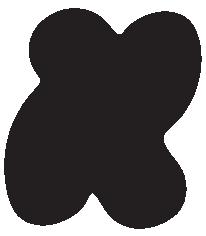


And so, when we look up to the s’chach in our Sukkah, we should peer beyond it and see the heavens above…but we should also look directly at the s’chach and remember that we had to place it there ourselves! motti@mrashkelon.com | www.mrashkelon.com
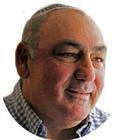 Ashkelon’s Own Anglo Property Expert
Ashkelon’s Own Anglo Property Expert
In Parshat Emor each of the shalosh regalim are described, yet there is some thing unique with respect to the way in which Sukkot is presented. In Perek 23 pesukkim 33-37 the holiday of Sukkot is described. Then there seems to be a con cluding pasuk summarizing all the holidays
These are God’s appointed [holy days] that you shall designate them as holy occasions …(Vayikra 23:37).
In the subsequent five pesukim there is an additional discussion about the four minim and the obligation of sitting in a Sukka. The “Ma’ase mitzvot” – appear in this section. Why are these verses not included in the prior section? Why is the depiction of Sukkot split into two?
Moreover, when the sacrifices of each holiday are discussed in Parshat Pinchas, there are seven lambs offered on each of Pesach and Shavuot, yet on Sukkot we are to offer fourteen lambs (see Bamidbar 28:27 and Bamidar 29:13). One again the korbanot on Succot are double the amount of the previous two regalim. Why is Sukkot mentioned twice in Emor and why do we
offer double the amount of sacrifices on Sukkot?
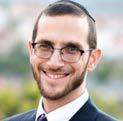
It is interesting to note that when we refer to the names of the 6 sidre Mishna – each is in the plural, other than Moed. Zeraim, Nashim, Nezikim, Kodshim, Taharot. Why was it not referred to as Moadim? Perhaps to highlight that each Moed (holiday) has a unique aspect.
Exactly on the date upon which the Ananei Hakavod returned and encircled the nation
Rav Hutner in Pachad Yitzhak explains the unique dual aspect of Sukkot. On the one hand, it is the end of the cycle of holidays –comprised of Pesach, Shavuot and Sukkot. In addition, it is the end of the cycle of the Yamim Noraim – Rosh Hashana, Yom Kippur and Sukkot. This dual aspect is reflected in the Torah by highlighting Sukkot twice. What is this double meaning to teach us?
Sefer Haikarim lists three major prin ciples (similar to the way in which the Rambam lists his 13 principles). These include: God’s existence, God’s control over the world and that Torah was God given. Each of these principles may be reflected in each of our three holidays. (i) Pesach attests to Hashem’s existence, through all the miracles that were conducted in Egypt. (ii) Shavuot clearly represents the Torah
Rav Kehilla, Nofei HaShemesh Maggid Shiur, Daf Yomi, OU.org Senior Ra"M, Kerem B'Yavneh ROSNERgiven to us at Har Sinai by God. (iii) Suk kot reflects God’s continued presence and hashgacha in this world. That is why we sit in a sukkah. We leave our homes and live in nature (teva), to remind us that every thing around us is from God. That relates to the holiday cycle, the culmination of which is the Sukkot celebration.
On the other hand, Sukkot is also con nected to the Yamim Noraim, where we cement our relationship with Hashem. The Gra offers a fascinating explanation as to why we celebrate Sukkot in the autumn, rather than immediately after Pesach. It would have been more logical to celebrate Sukkot following Pesach and prior to Shavuot, symbolizing the Sukkot in which we dwelled during the intermittent journey in the desert that transpired between the historical events of Yetziat Mitzrayim (Pesach) and Matan Torah (Shavuot). In his commentary on Shir Hashirim, the Gra posits that if one does the math, Moshe remained on Har Sinai for a hundred and twenty days — three sets of forty days. The first time he ascended was on the seventh day of Sivan, and he descended on the sev enteenth of Tammuz, at which point he broke the Luchot. At this point, chazal tell us that the special protective Anenei Hakavod surrounding the nation disappeared. Moshe, then, ascended on the eighteenth of Tammuz to ask for forgiveness on behalf of the nation and returned on Erev Rosh Chodesh Elul to inform Bnei Yisrael that they had been forgiven for their transgres sion of cheit Ha’egel. Moshe’s final ascent on Har Sinai was on Rosh Chodesh Elul, and he returned on Yom Kippur with the second set of Luchot.
Rehavia (Metudella) 2 rms, quiet, spacious, large balcony, garden (use), high ceilings, great




Moshe: 053-6305725





Old Katamon (Palmach) 3 rms, charming, pleasant, well-maintained, 2 Sukkah balconies, prime

Exclusive! Tovi: 053-6268110

Baka (Heletz) Gorgeous! 2 rms (70m) fully-furnished & equipped, Sukkah balcony, parking. Exclusive! Anita: 053-6318355

At that point, on the following day, Moshe announced the building of the Mishkan and requested that people donate the req uisite items. On the twelfth and thirteenth of the month of Tishrei, contributions and donations were collected for the Mishkan.

On the fourteenth day of Tishrei, they began to build the Mishkan, and on the fif teenth day, the Ananei Hakavod returned. The clouds that had disappeared at the time of the Cheit Ha’Eigel returned with the commencement of the building of the Mishkan. It is no coincidence, then, that we celebrate Sukkot on the fifteenth day of Tishrei, exactly on the date upon which the Ananei Hakavod returned and encircled the nation. According to the Gra, Sukkot was not moved from the Spring to the Fall, it is at the particular time that the “Suk kot” (Ananei Hakavod) reappeared in the
desert! After all, we hold like Rabbi Eliezer (Succah 11b) that the sukkah is meant to remind is of those special clouds of glory. See also -Bach O.C. 625.
Size is 6.35 cm wide and 9.3 high.

Based on the Gra’s explanation, the second aspect of Sukkot is to engage in a positive act to express our closeness to Hashem. That is the second half of the chapter in Emor that highlights the “maa’se mitzvot” - taking the 4 minim and sitting in a sukkah. That relates to Rosh Hashana and Yom Kippur when we get closer to God. When we partake in the mitzvah of sitting in a sukkah, we should consider the dual aspect of the holiday: (i) to recognize all the daily miracles performed for us and (ii) to get closer to God through the performance of mitzvot. May we be zoche to once again rebuild our Beit HaMikdash, also referred to as Succat David Hanofalet!
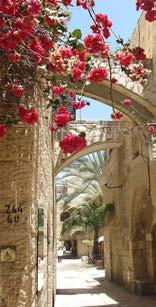



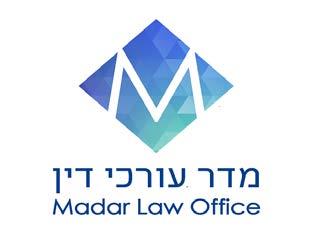




Rebbe Aharon Perlow, zy’a, the third Rebbe of the Karliner dynasty, was known by the name of his sefer, “Beis Aharon”. A beloved tzadik and guide, the Beis Aharon was known for his joyful mesirus nefesh, sacrifice and dedication in fulfilling mitzvos.
One Tishrei, winter came early to the Russian countryside, and on Motzei Yom Kippur, the shtetl of Karlin was hit with an early season snowstorm. Even the symbolic cleanliness and purity of being covered in white was not an encouraging omen, for the snow prevented everyone from build ing their sukkah. The humble abode of the Karliner Rebbe had a retractable roof that could be rolled back to enable configura tion as an ‘indoor’ sukkah, but there was so much snow piled up on top that there was no way to open it for the chag.
On the night of Erev Yom Tov, one of the dedicated chasidim of the Beis Aharon made his way to the Rebbe’s house, bravely climbed up on the frozen roof and began clearing off mounds of snow. Berel, the kind and simple street-sweeper of Karlin, worked throughout the night, braving howling
winds and sleet, his hands frozen from ‘shoveling’ the ice, snow and slush with his old, broken broom. By day-break, the job was complete, and he had laid s’chach over the opening; the sukkah was ready in time for Yom Tov.
Seeing this, the Beis Aharon was ecstatic. He would be able to sit in the tzila d’me hemnusah, the ‘shade of faith’, and fulfill the great mitzvah of dwelling in a sukkah. Before Berel could humbly slip away, the Rebbe grabbed him, and in a state of mochin d’gadlus, expanded consciousness and joy, exclaimed, “How can I ever repay you for this awesome kindness? Please choose your reward: I could bless you with riches beyond your imagination; you and your children will lack for nothing …or,” he continued with sparkle in his eye, “I can bless you to be near me in Gan Eden, imi b’mechitzasi, with me, sharing in my portion, for eternity.”
Berel thought for a moment and said, “I’ll take the first beracha.” And from that day on, the poor street-sweeper chassid was indeed blessed with great wealth….
…Wait, hold on. Berel chose money over being with his Rebbe for eternity? Is that an uplifting message to share in the sukkah? This probably isn’t the Yom Tov story one would expect in a Torah column meant to inspire. Was it an editor’s error?
An insight on the story that Rav Yitzchok Hisiger shared in the name of Rav Yisrael
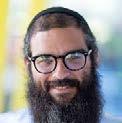 Mashpiah, OU-NCSY Executive Director, Camp HASC Author of Baderech: Along the Path of Teshuva (Mosaica 2021)
Mashpiah, OU-NCSY Executive Director, Camp HASC Author of Baderech: Along the Path of Teshuva (Mosaica 2021)
Of course, for a devoted chasid, the pos sibility of spending eternity learning with his Rebbe can be nothing short of paradise. What could be a greater pleasure?
Berel was such a selfless person, that he was even willing to sacrifice his eternal reward of being with his Rebbe — a pleasure he would enjoy for himself - to gain the ability to help others. Berel reasoned that with the Rebbe’s blessing, in addition to being a baal chesed, he could become a generous baal tzedakah and expansively support the needy as well. How could the loving and thoughtful Berel opt for super nal reward that would only benefit himself, when he could gather so many other souls into the Rebbe’s beracha? For Berel, the ability to help other Jews was the greatest pleasure!
Sukkos is called zeman simchaseinu, the festival identified as the most joyous time of year. The Chasam Sofer points out why this is so. Isn’t every Yom Tov a time of cel ebration and simcha? On the other hand, the Chagim can be a stressful time. All the expenses and preparations can be a great challenge to any family’s capacity. For ani yim, those who experience poverty to the point of struggling to provide for the needs of their families on a regular week, the Cha gim can be especially difficult.
On Pesach, kimcha d’Pischa provides meals and provisions for the poor. Yet, the ani remains quite aware that he is the recipient of charity; he is enjoying someone else’s success and generosity. Sukos is called Chag ha’Asif, the Festival of Gathering, for
it arrives at the end of the harvest season. As farmers would collect the bounty and gather in their crops, there would inevita bly be forgotten sheaves, leftover stalks of wheat, fruit and other produce left behind. These halachically belonged to the poor, who could freely collect them three times a day. In this way, the agricultural and social laws of pe’ah leket and shich’chah helped provide everyone in the community with their needs. This bounty was existentially different than receiving a handout. On Suk kos, all are meant to gather that which is already truly theirs.
The Chasam Sofer concludes that a true ‘zeman simchaseinu’ is when everyone in our community is able to enjoy Yom Tov with their dignity intact.
There was a Minhag in Galitzia of beauti fying the sukkah with lavish and elaborate ornaments. Rebbe Chaim of Tzanz, the Divrei Chaim, zy’a, was opposed to this cus tom on the grounds that it was wasteful and distracted from the real joy of Yom Tov. “The best noi sukkah,” he said, “the most beautiful sukkah decoration, is the joy of knowing we have done our utmost to ensure that those who are lacking have all their Yom Tov needs met.”
May we always choose to gather each other into our blessings, and may this Sukkos truly be a zeman simchaseinu overflowing with bounty and revealed good for all!
TRANSFER YOUR OLD FILM/VIDEO's (All formats) In Quality to Digital Preserve Family History from Fading
Michael 052.286.8626
Photography with feeling Facebook.com/L'Dorot Photography

Question: Is it proper to go on a trip to a place where one does not know that he will have access to a sukka?

Answer: The gemara (Sukka 26a) exempts from sitting in a sukka those who travel for mitzvot and even travelers for other pur poses, but whereas the former are exempt day and night, travelers for optional mat ters are exempt only during the time of the day they are traveling. Tosafot (ad loc.) explains that whereas the mitzva exemp tion is one application of a broad exemption from mitzvot for those involved in other mitzvot, the traveler exemption is based on a concept unique to sukka – teishvu, k’ein taduru. This means that because the sukka should replace your house, things

RAV DANIEL MANN that one regularly does outside his house are not required to be done in the sukka. Therefore, travelers, who do not eat in their home, do not have to eat in a sukka. The Rama (Orach Chayim, 640:8) understands this leniency for a non-mitzva traveler to allow him to travel even if he will not have a sukka during his night stopover.

How is the traveler expected to seek a sukka? The Magen Avraham (640:15) says he is to build one, if one is not available at his stopping point. The Levush (OC 640:8) considers it beyond normal expectations (see Rama, OC 640:4) to toil so much as to build a sukka there. He posits that his obli gation is to try to get access to a local sukka. The Biur Halacha (to 640:8) agrees with the Levush, as the Rama implies. Based on the basic sources, then, seemingly one may travel, as is a normal thing to do, and eat along the way outside a sukka, and if he stays in a place with a sukka, he should just seek one out if possible.
In recent times, Rav Moshe Feinstein (Igrot Moshe, OC III:93) claimed that the gemara referred to cases of commercial trips, but pleasure trips, which are not a reasonable need, have no leniency. (See Shulchan Aruch, OC 539:5 regarding when commerce is permitted on chol hamo’ed). Rav Feinstein raises another issue. Even if under the circumstances, one is exempt from sukka, Hashem looks critically upon those who put themselves in situations that
The Orthodox Union - via its website - fields questions of all types in areas of kashrut, Jewish law and values. Some of them are answered by Eretz Hemdah, the Institute for Advanced Jewish Studies, Jerusalem, headed by Rav Yosef Carmel and Rav Moshe Ehrenreich, founded by HaRav Shaul Yisraeli zt”l, to prepare rabbanim and dayanim to serve the National Religious community in Israel and abroad. Ask the Rabbi is a joint venture of the OU, Yerushalayim Network, Eretz Hemdah... and OU Israel’s Torah Tidbits.


obviate mitzva obligation, e.g., one who wears clothing that does not require tzitzit (Menachot 41a). Rav Moshe reasoned this applies here as well.
Normally, we react negatively to distinc tions that go against setimat haposkim. In other words, if this common exemption were limited, earlier poskim should have pointed this out. Indeed, Rav Elyashiv’s (see Dirshu 640:41) posits that recreational travelers also have the fundamental exemption. However, in this case, lack of precedent is a weaker argument than usual because until recent times, people rarely traveled recreationally away from their vicinity. Then, arguably, this case did not come up, and the assumption could have been that the traveler’s exemption applied only to a standard need, i.e., a financial or other pressing one.
On the other hand, the sociological pendulum has turned some examples of recreation into a necessity of life, as for very many, Sukkot “glued to” around the home is a lost family opportunity. Many bnei Torah shorten summer holidays to be home (part of) chol hamoed (see Living the Halachic Process I,D-9). It is thus no light matter (sometimes on a par with financial loss) to curtail the opportunity to spend it in a memorable way with the family due to concern about the sukka. Rav Elyashiv (ibid.) is cited as distinguishing between this and avoiding tzitzit, as that is a problem
when one does something unnatural and/ or on an ongoing basis to get out of the mitzva.
Rav Elyashiv advised, as did Rav Ovadia Yosef (Yechaveh Da’at III:47), to use this exemption sparingly, and we would iden tify the following parameters as part of broad guidance: 1. How important is the recreational trip? 2. Does it have alterna tives in places with a sukka or close enough to make it home to eat? 3. How long will the sukka hiatus be? Rav M. Willig suggested the following compromise: take the trip but look for a sukka, and if one cannot find one, eat things that do not require a sukka.
For a Din Torah in English or Hebrew contact ‘Eretz Hemdah - Gazit’ Rabbinical Court: 077215-8-215 • fax: (02) 537-9626 beitdin@eretzhemdah.org


Oneof the most beautiful customs associated with the Yom Tov of Sukkot, is welcoming the Ush pizin (special guests) to our Sukka each night. Of course these seven Ushpizin rep resent the early generations and greatest lights of the Jewish People. Each night we welcome a new guest to our Sukka, to join the other special guests who have gathered in our Sukka as the Yom Tov has progressed. We welcome Avraham, Yitzchak, Yaakov, Moshe, Aharon, Yosef, and David. Aside from the great symbol ism of surrounding ourselves metaphysically with the presence and great ruchni yut of our ancestors, what is the significance of this beautiful custom of welcom ing these Ushpizin into our Sukka?
The Netivot Shalom, the Slonimer Rebbe zy’a, points out that Sukkot is also referred to as Zman Simchateinu, the time of our joy. The Rebbe likens the experience of the Yom Tov of Sukkot, to the experience of a mar riage, in this case between Am Yisrael and HaKadosh Baruch Hu. The Sukka itself, represents the chupa, standing under neath the canopy of Divine protection. The seven days of Sukkot, explains the Rebbe, correspond to the seven celebratory days, beginning with the wedding, where family
and friends gather together to rejoice and offer the special sheva brachot to gladden the chatan and kalla.
Perhaps this beautiful insight of the Netivot Shalom, can also help us to under stand the significance of the custom to welcome the Ushpizin as well. One of the criteria for hosting a celebratory Sheva brachot meal, is that each time the family and friends assemble to celebrate with the chatan and kalla, we invite Panim Chada shot, new faces, new guests who have not yet had the zechut or opportunity to fulfill the mitzva of rejoicing before and gladdening the chatan and Kalla. Perhaps if the entire Yom Tov of Sukkot is indeed meant to parallel those seven days of celebra tion for the bride and groom, then perhaps our Ushpizin, our honored guests serve as our proverbial Panim Cha dashot for each day of celebration.
As we welcome the ushpizin to our Sukka this year, may we indeed be blessed to feel as if we have entered into the security of standing under the canopy of Divine pro tection that the Sukka represents; to feel the joy and excitement of celebrating with a new special guest each night, and may we be blessed to experience these days with complete and utter Simcha!
Chag Sameach!







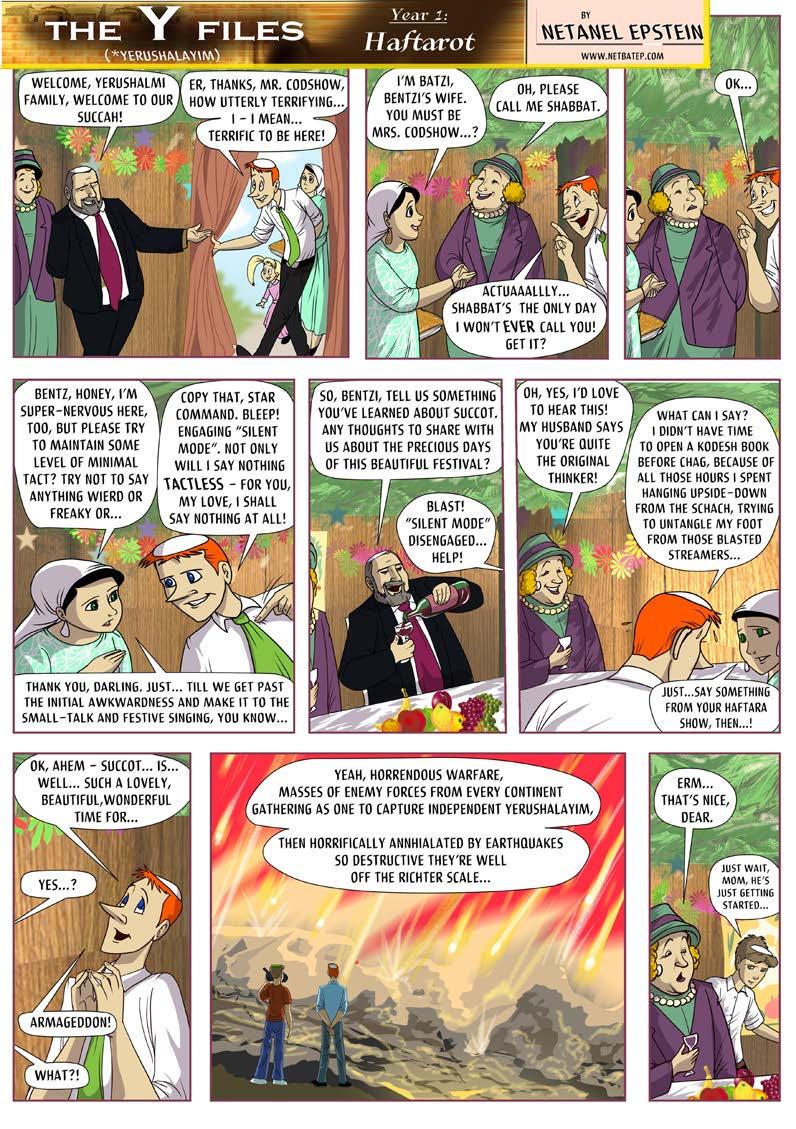

is reluctant to send Yishmael away and Yitzchak seeks reconciliation with Yish mael and seeks to bless Esav.
6th Aliya (25:1-11) Avraham mar ries Keturah; they have 6 sons. All that Avraham has goes to Yitzchak; these are sent eastward with gifts. Avraham dies at age 175; he is buried by Yitzchak and Yishmael in Ma’arat Hamachpelah. Yitzchak is blessed by G-d: he lives in Beer L’chai Roi. The transition from Avraham to Yitzchak is complete. While G-d has been a silent partner in this parsha, here He completes the generational transfer – He blesses Yitzchak. The Jewish people will be Yitzchak and not Yishmael.
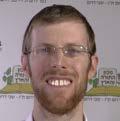
Technically, shemitah fruit should not be exported from Israel. However, most posekim allow the export of otzar beit din etrogim for several reasons:
7th Aliya (25:12-18) The genera tions of Yishmael are enumerated. Yishmael dies. His descendants dwell from Egypt to Assyria. Yishmael’s story is brief. He has numer ous and powerful offspring. The brevity
1. The Tosafot write that it is forbidden to export shemitah fruit to eat, but for commerce it is allowed. Here, the etrogim are not exported for con sumption, rather for use as a mitzvah.
2. Some allow fruit planted for export to be exported.
is to emphasize that the Torah is not as interested in the history of power as in the history of the covenant of G-d with the Jewish people. And that will be told at great length.
 BY RABBI MOSHE BLOOM en.toraland.org.il
BY RABBI MOSHE BLOOM en.toraland.org.il
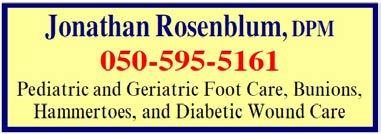

The theme of this week’s haftorah echoes the theme in our parsha which men tions both the death of Sarah and Avraham.
King David was an older man and a woman was assigned to him to serve him and provide warmth.
4. The prohibition against the export of shemitah fruit is due to the bi’ur obligation (following the opinion of the Rash). For the etrog, however, there is a doubt whether it is sub ject to bi’ur. Customers should be instructed to perform bi’ur on the etrog immediately after Sukkot, or if preparing jam, to finish it by 15 Shevat
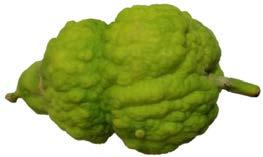
Adoniyahu, one of King David’s sons, began to prepare for ascension to his father’s throne. This was despite the fact that King David expressed his wishes that his son Shlomo succeed him.
.
While Rabbi Elyashiv ruled that the etrogim should be returned to Israel after Sukkot, before bi’ur time, to the best of my knowledge this is not the common practice.
Adoniyahu convinces two very signif icant personalities - the High Priest and the commander of King David’s armies - to
BY RABBI CHANOCH YERES Rav, Beit Knesset Beit Yisrael, Yemin MosheWhen Avraham addresses the people of Cheit, trying to acquire a burial spot for his wife, he says “Ger V’Toshav Anochi Eimachem” (23:4) “A Stranger and a Resident am I with you”
3. Some allow export when the local crop is so abundant that it will be wasted if not exported. It seems that this is the situation today with etrogim. In regular years many etrogim are exported, so if export would be forbidden this year, many kosher etrogim will go to waste.
This seems to be a contradiction. If one is a stranger than he is not a resident, if he is a resident than he is no longer a stranger. What did Avraham mean?
The Magid of Dubno (Jacob ben Wolf Kranz 1741-1804) explains that Avraham watched how he spoke in this tense situation in order to, both, state his truth and be able to keep the peace -Shalom Bayit. Avraham said, on the one hand, “I am a Resident’ due to G-d’s promise to receive this Land and on the other hand, I still need your agreement to purchase a plot. In other words, Avraham implied “I am the resident” and you are the “strangers”, while they understood him as saying that “they” are the residents and Avraham is the stranger.
The peace was kept, and Avraham remained true to his ideals.
Shabbat Shalom
Rabbi Moshe Feinstein (OC 1:186; 5:42) states that even those who are strin gent regarding heter mechirah may purchase exported heter mechirah etrogim, since we are lenient regarding sha mur and ne’evad fruit (protected and worked in a forbidden fashion). Furthermore, he maintains that it is preferable to purchase an etrog from the Land of Israel: “For this reason, even during the shemitah year, it is optimal to purchase etrogim from the Land of Israel, known for their ungrafted status, rather than from other places, as during other years.”
We are a young senior couple looking for a 1 bedroom furnished apartment in Jerusalem from December 2021-June 2022
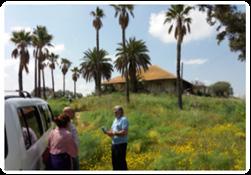

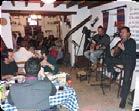

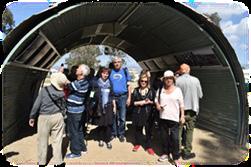

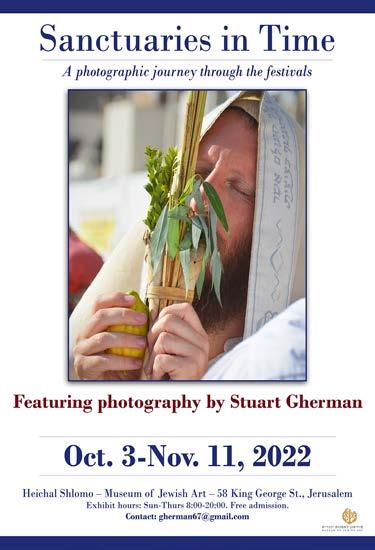




 Ariel Werblowsky Modiin Chapter Director
Ariel Werblowsky Modiin Chapter Director


In one of the most powerful parts of the Rosh Hashanah and Yom Kippur davening, U’Netane Tokef, we say the words- “You will remember all that was forgotten, you will open the Book of Remembrances.”. Simply, these words mean that we are ask ing Hashem to remember all that has been forgotten. This of course raises an obvious question; Does Hashem really need our reminder? Surely this prayer must have a deeper meaning.
The Rambam explains that the shofar is used on Rosh Hashana to “awaken” those of us who need to be woken up, to call us to repent from our sins, and to remind us of Hashem. I think that the real meaning of U’Netane Tokef, and specifically the line mentioned above, is to ask Hashem to see that we remember the importance of doing teshuva, and to give us a chance to prove that we understand we must leave our sins behind while turning towards the torah and mitzvot. In that case, where does this journey back to Hashem start?
On Simchat Torah we start reading the Torah from the beginning, starting from Parashat Bereshit. In the parsha we read “And God created man in His image; in the
image of God He created him” (Bereshit 1:27). Hashem created us in his image, and that is how he wants us to live our daily life. The reason Sukkot comes right after Yom Kippur is so we can start the year off the right way by practicing the hospitality and the kindness between us that demonstrates the true attributes of Hashem. Hashem created us in his image so we can do good in this world, and to those around us, and so we start the year by not only remind ing ourselves of the right way to act, but by showing that our actions are stronger than our words.
In a deeply powerful scene, Moshe Rabbeinu is found with his hands held high on top of the mountain praying for the people gripped in a raging battle with Amalek below. Ahron and Chur stood on either side of Moshe Rabbeinu holding his hands aloft (Shemot 17;10). Rashi teaches that Chur was the son of Moshe’s sister, Miriam. What more do we know about Chur? What is the symbolism of his joining with Ahron to support the hands of Moshe Rabbeinu?
on stood and teach people calf

There is a very famous saying “money can’t buy happiness”, but this isn’t true for everyone. A survey showed that mil lionaires whose net worth was 10 million dollars were a lot happier than those whose net worth was 1 or 2 million dol lars. They already have so much but they won’t ever be happy because they will
Rabbi Roberts in Through the Prism of Torah explains that Ahron and Chur personified contrasting character traits. Ahron was a peacemaker, he constantly looked for ways to create harmony among his people. Indeed, he was ready to compromise his own values to achieve this goal, as we see in the story of the sin of the golden calf. Chur,
Chur, person like qualities relationships path, whenever service shamayim example These Rabbeinu approaches have Amalek,
always be wanting more, and not stopping to appreciate how much they have. Nowa days ,we live in a very materialistic world where no matter how much we have we always want more. We very rarely stop and be grateful for how much we already have.
I think that תוכוס teaches us a very important lesson. It is very important to work and achieve our goals and do our best, but sometimes we have to stop and realize and appreciate all the things that we have, both big and small. תוכוס has many names but one of them is חמש ןמז ונית “time of our happiness”. We are truly happy, we focus on the simple things, spending time with family and friends and davening and connecting to ‘ה. For a week we leave our nice houses and we live simply in a hut outside. When we look up to the sky out of our הכוס we have to realize how lucky we are our and think about the fact that thousands of years ago, our ancestors left םירצמ with nothing, to go survive in the desert with no food and water but they trusted in ‘ה and He protected us with the דובכה יננע
When we sit inside this simple hut for 7 days, it gives us a chance to think about the things that are most important in life. To take time away from the superficial world and to realize what really matters and be grateful and happy about how much we have.
NCSY Israel is the premier organization in Israel, dedicated to connect, inspire, empower teen olim to the Land of Israel by encouraging pas sionate Judaism through Torah and Tradition. Find out more at israel.ncsy.org





We wish all of our graduates hatzlacha in their shlichut on behalf of the Jewish people.
RABBI DR. KENNETH BRANDER PRESIDENT & ROSH HAYESHIVA
RABBI DR. SHLOMO RISKIN FOUNDER & ROSH HAYESHIVA
YINON AHIMAN DIRECTOR GENERAL ZEV WEISS CHAIRMAN, ISRAELI BOARD OF DIRECTORS
RABBI ELIAHU BIRNBAUM DIRECTOR, OTS EMISSARY TRAINING PROGRAMS
ALIYA-BY-ALIYA SEDRA SUMMARY

We read the parsha of V’zot Habracha, a short parsha of 41 verses. And the beginning of Breishit which itself is 34 verses.
Moshe blesses the tribes of the Jewish people, pointing out the qualities that a variegated society will need. Leadership, consistency, legislature, judges, business, agriculture, warriors, minerals. In this Moshe speaks mostly to G-d, not to the peo ple, illustrating to Him the greatness of the people he is to take leave of.
1st aliya (Dvarim 33:1-7) Moshe blesses the people before his death. G-d approached us at Sinai, although He has all nations; we were the ones who received His utterances. He is the King over Israel. Reuven endures as does his progeny. Yehuda, G-d hear his voice, he is powerful, and be his help.
Reuven is the consistent one. Enduring. Always at the ready. Yehuda is power and leadership, the eventual monarch.
2nd aliya (33:8-12) Levi, He is Your pious one, withstanding trials by listening to Your cove nant. They will teach Your Torah and serve You. Bless him and gird him in the face of adversaries. Binyamin, the beloved of G-d,
He protects him, while he dwells on His chest.
The Jewish people need religious leaders and that is Levi. Binyamin is the seat of the Mikdash, the physical partner to Levi’s reli gious service.
3rd aliya (33:13-17) Yosef, his land is blessed, from the sweet of the land, mountains and hills. He has power through both Ephraim and Menashe.
Yosef is agricultural bounty, strength in economy and strength in numbers.
4th aliya (33:18-21) Zevulun is pleasing in his journeys, Yis sachar in his dwellings. People gather at the mountain, enjoying the bounty of the sea and of the earth. Gad is blessed, dwelling as a lion. His portion is legislation, leadership, righteousness and justice.
Zevulun is the merchant marine, Yis sachar the philosophy prince. Gad is the backbone of national institutions, of justice and the rule of law.
5th aliya (33:21-29) Dan is a lion cub, enjoying the Bashan. Naf tali, satisfied, full of blessing, the sea and the south. Asher, blessed more than children, beloved by brothers, feet of oil, shoes of iron and copper. None is like G-d, riding the heavens in your aid, splendorous.
Dan protects the northern border, while Naftali the west and the south. Asher is the peace maker, with “soft oiled feet but shoes of iron”, a metaphor for stepping softly but with principles when needed. The peace maker.
Chatan Torah (34:1-12) G-d of ages surveys, under Him strength, repelling enemies. The Jewish people dwell safely, what and wine,
oil like dew. Fortunate are you Israel to have such a Protector. Moshe ascended Har Navo, looking out over the land. G-d told him, this is the land I promised to you, though you will not enter it. Moshe died, buried, though his burial spot is not known. His strength was with him to the end. The people mourned 30 days. Yehoshua was filled with Divine spirit, though none will ever be as Moshe, knowing G-d, face to face, performing all the wonders which he did in front of all Israel.
that it is all right there in front of them. His life’s mission accomplished.
Chatan Torah Breishit (1:1-2:3) So as to continue the lifelong learning of our Torah, following the conclusion of the Torah we jump right in and continue with the begin ning of the Torah, reading the story of Creation from day 1 through Shabbat.
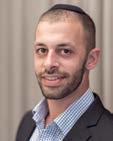
heart
Arnona. The building has a Synagogue on the ground floor, which has daily
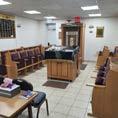
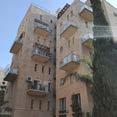
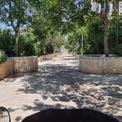
all year round. The building has a
on call
all
Anglo neighbours. Highly
option for a couple looking to
Jerusalem


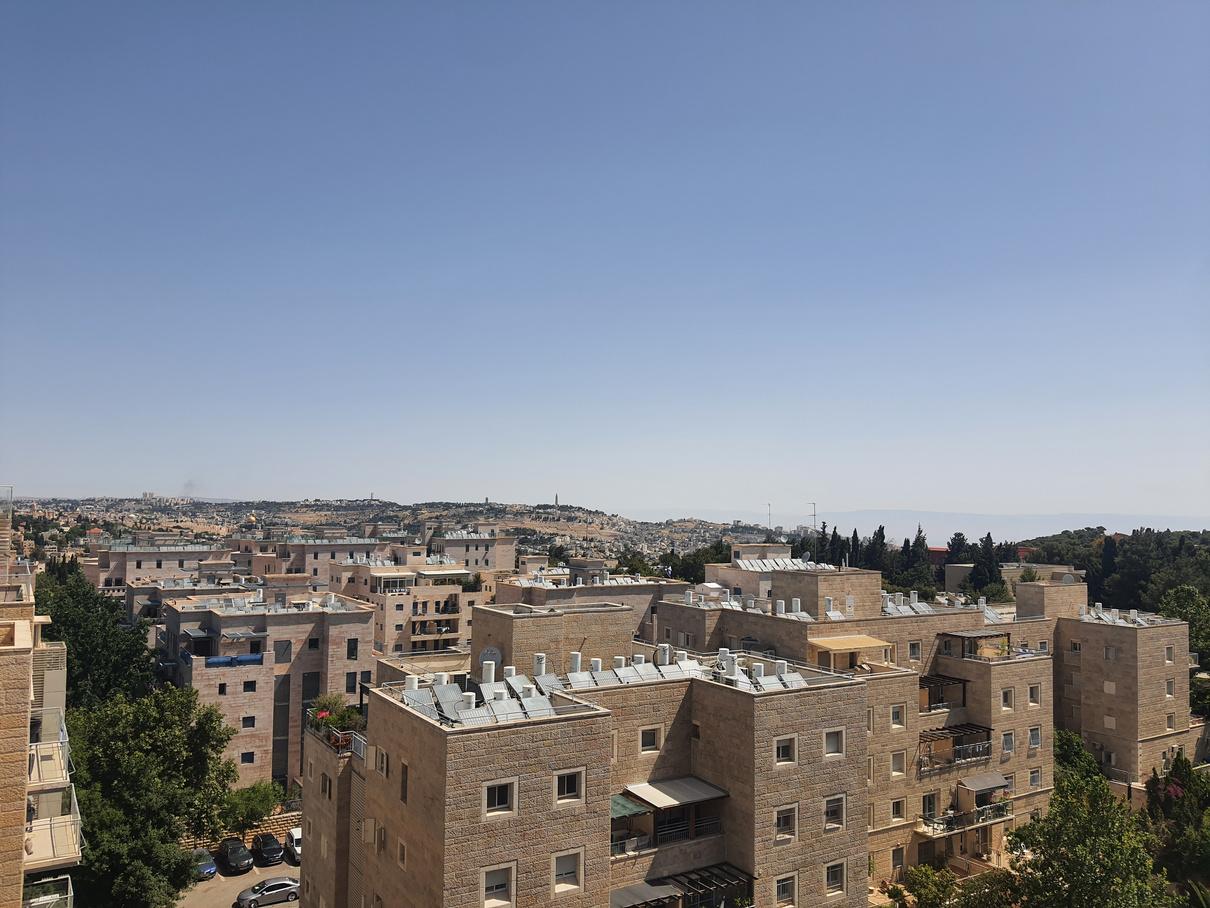
a religious Anglo
good location, quiet, and



And so Moses dies, alone on a mountain with God as he had been all those years ago when, as a shepherd in Midian, he caught sight of a bush in flames and heard the Call that changed his life and the moral hori zons of the world.
It is a scene affecting in its simplicity. There are no crowds. There is no weep ing. The sense of closeness yet distance is almost overwhelming. He sees the land from afar but has known for some time that he will never reach it. Neither his wife nor his children are there to say goodbye; they disappeared from the nar rative long before. His sister Miriam and his brother Aaron, with whom he shared the burdens of leadership for so long, have predeceased him. His disciple Joshua has
become his successor. Moses has become the lonely man of faith, except that with God no person is lonely even if they are alone.
It is a profoundly sad moment, yet the obituary the Torah gives him – whether Joshua wrote it, or whether he wrote it him self at God’s behest with tears in his eyes1 – is unsurpassed:

There has never arisen a prophet in Israel like Moses, whom the Lord knew face-toface, in all the signs and wonders the Lord sent him to perform in Egypt against Pha raoh, all his officials, and all of his land, and in all the acts of a mighty hand and of terri fying power that Moses performed before the eyes of all Israel. (Deut. 34:10-12)
Moses rarely figures in the lists people make from time to time of the most influ ential people in history. He is harder to identify with than Abraham in his devo tion, David in his charisma, or Isaiah in his symphonies of hope. The contrast between Abraham’s death and Moses’ death could not be more pointed. Of Abraham, the Torah says:
“Then Abraham breathed his last and died in his ripe old age, aged and satisfied, and he was gathered to his people.” (Gen.
1 For more on this, read Bava Batra 15a.
Thoughts on the Weekly Parsha from RABBI LORD JONATHAN SACKS ZT"L Former Chief Rabbi of the United Hebrew Congregations of the Commonwealth May the learning of these Divrei Torah be תמשנ יוליעל HaRav Ya'akov Zvi ben David Arieh zt"l25:8)
Abraham’s death was serene. Though he had been through many trials, he had lived to see the first fulfilment of the promises God had given him. He had a child, and he had acquired at least the first plot of land in Israel. In the long journey of his descen dants, he had taken the first step. There is a sense of closure.
By contrast, Moses’ old age is anything but serene. In the last month of his life he challenges the people with undiminished vigour and unvarnished candour. At the very moment that they are getting ready to cross the Jordan and enter the land, Moses warns them of the challenges ahead. The greatest trial, he says, will not be poverty but affluence, not slavery but freedom, not homelessness in the desert but the com fort of home. Reading these words, one is reminded of Dylan Thomas’ poem, “Do not go gentle into that good night.” There is as much passion in his words in his hundred and twentieth year as at any earlier stage of his life. This is not a man ready to retire. Until the very end he continues to chal lenge both the people and God.
What do we learn from the life, and death, of Moses?
1. For each of us, even for the greatest, there is a Jordan we will not cross, a prom ised land we will not enter, a destination we will not reach. That is what Rabbi Tar fon meant when he said: It is not for you to complete the task, but neither are you free to desist from it. (Mishnah Avot 2:16) What we began, others will continue. What matters is that we undertook the journey. We did not stand still.
2. “No man knows his burial place.”
OLD KATAMON CLOSE TO GERMAN COLONY - New 3 room apartment, elevator, balcony with view, master bedroom, quiet, bright, 3,600,000NIS
OLD KATAMON - New small building, 4/5 rooms, good location, garden or balconies, luxurious, quiet, storage, parking, rare!
OLD KATAMON - Large 6 rooms, 210m, modern building, Shabat elevator, accessibility without stairs, on one level, 3 balconies, 3 directions, storageroom, 2 parking spots!
UNIQUE HOUSE IN OLD KATAMONGreat location, beautiful house on a plot of a dunam, huge garden, Arabic style, quiet, 2 parking spots, rare!
28, Kovshei Katamon Street, Jerusalem Tel: 02.5633008 - www.ben-zimra.com
5%
and
050-344-6261
Lechumra
Otzar
058-444-6260
(Deut. 34:6) What a contrast between Moses and the heroes of other civilisations whose burial places become monuments, shrines, places of pilgrimage. It was pre cisely to avoid this that the Torah insists explicitly that no one knows where Moses is buried. We believe that the greatest mis take is to worship human beings as if they were gods. We admire human beings; we do not worship them. That difference is anything but small.
3. God alone is perfect. That is what Moses wanted people never to forget. Even the greatest human is not perfect. Even Moses sinned. We still do not know what his sin was – there are many opinions - but that is why God told him he would not enter the Promised Land. No human is infallible. Perfection belongs to God alone. Only when we honour this essential difference between heaven and earth can God be God and humans, human.
4. Nor does the Torah hide Moses’ sin. “Because you did not sanctify Me…” (Num. 20:12) The Torah does not hide anyone’s sin. It is fearlessly honest about the greatest of the great. Bad things happen when we try to hide people’s sins. That is why there have been so many recent scandals in the world of religious Jews, some sexual, some financial, some of other kinds. When religious people hide the truth they do so from the high est of motives. They seek to prevent a chillul Hashem. The result, inevitably, is a greater chillul Hashem. Such sancti mony, denying the shortcomings of even the greatest, leads to consequences that are ugly and evil and turn decent people away from religion. The Torah does not
hide people’s sins. Neither may we.
5. There is more than one way of living a good life. Even Moses, the greatest of men, could not lead alone. He needed the peace-making skills of Aaron, the courage of Miriam, and the support of the seventy elders. We should never ask: Why am I not as great as X? We each have something, a skill, a passion, a sensitivity, that makes, or could make, us great. The greatest mis take is trying to be someone else instead of being yourself. Do what you are best at, then surround yourself with people who are strong where you are weak.
6. Never lose the idealism of youth. The Torah says of Moses that at the age of a hun dred and twenty, “his eyes had not grown dim, nor his vitality fled.” (Deut. 34:7) I used to think these were two complemen tary phrases until I realised that the first is the explanation of the second. Moses’ eyes were undimmed because he never lost the passion for justice that he had as a young man. It is there, as vigorous in Deuteronomy as it was in Exodus. We are as young as our ideals. Give way to cynicism and you rapidly age.
7. At the Burning Bush, Moses said to God: “I am not a man of words... I am slow of speech and tongue.” By the time we reach Deuteronomy, the book named Devarim – “Words” - Moses has become the most eloquent of prophets. Some are puzzled by this. They should not be. “Who gives man speech? Said the Lord to him... I will help you speak and I will teach you what to say.” (Ex. 11-12) God chose one who was not a man of words, so that when he spoke, people realised that it was not he who was speaking but God who was speaking through
him. What he spoke were not his words but God’s words.
That is also why God chose a couple who could not have children – Abraham and Sarah – to become parents of the first Jew ish child. That is why He chose a people not conspicuous for their piety to become God’s witnesses to the world. The highest form of greatness is so to open ourselves to God that His blessings flow through us to the world. That is how the priests blessed the people. It was not their blessing. They were the channel of God’s blessing. The highest achievement to which we can aspire is so to open ourselves to others and to God in love that something greater than ourselves flows through us.
8. Moses defended the people. Did he like them? Did he admire them? Was he liked by them? The Torah leaves us in no doubt as to the answers to those questions. Yet he defended them with all the passion and power at his disposal. Even when they had sinned. Even when they were ungrateful to God. Even when they made a Golden Calf. He risked his life to do so. He said to God: “Forgive their sin - but if not, blot me out of the book You have written” (Ex. 32:32). According to the Talmud, God taught Moses this lesson at the very outset of his career.
When Moses said about the people, “They will not believe me” (Ex. 4:1) God said, “They are the believers, children of believ ers, and in the end it will be you who does not believe.”2
The leaders worthy of admiration are those who defend the people - even the non-Orthodox, even the secular, even those whose orthodoxy is a different shade from theirs. The people worthy of respect are those who give respect. Those who hate will be hated, those who look down on others will be looked down on, and those who condemn will be condemned. That is a basic principle of Judaism: middah kenegged middah. The people who are great are those who help others to become great. Moses taught the Jewish people how to become great.
The greatest tribute the Torah gives Moses is to call him eved Hashem, the servant of God. That is why the Rambam writes that we can all be as great as Moses.3 Because we can all serve. We are as great as the causes we serve, and when we serve with true humility, a Force greater than ourselves flows through us, bringing the Divine Presence into the world.
2 Shabbat 97a.
3 Mishneh Torah, Hilchot Teshuvah 5:2.
Covenant and Conversation 5782 is kindly supported by the Maurice Wohl Charita ble Foundation in memory of Maurice and Vivienne Wohl z”l. These weekly teach ings from Rabbi Sacks zt"l are part of the ‘Covenant & Conversation’ series on the weekly Torah reading. Read more on www.rabbisacks.org.
The last eight verses of the parashah are unlike any others in the Torah, for they record the death of its own narrator. The Talmud wonders how this is possible: “Did Moshe write these pesukim or were they written by his student Yehoshua after Moshe’s passing?”[1] To put it more starkly, did Moshe not write the entire Torah?
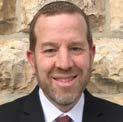
Moshe’s Tears
Although it is debated among the Sages, the generally accepted answer is a resound ing yes. Moshe wrote it all, including his own demise and burial. Still, the modality of the writing at this ultimate stage differed: “Until now,” the Talmud tells us, “the Holy One would speak and then Moshe would speak and write. From now, the Holy One would speak and Moshe would write in tears.”[2]
Rabbi Joseph Soloveitchik explained the unusual procedure as follows. For the rest of the Torah, God would dictate the words of prophecy to Moshe who would speak them to the people and then write them down. In these circumstances, Moshe could not deliver God’s word to the people because the events described had not yet occurred. This was the first time that the step of communicating with the people on God’s behalf was omitted. These final verses were never taught by Moshe to the people; they went straight to parchment.
As for Moshe’s writing tearfully, the Rav clarified that Moshe was not crying because he was sad about his impending death. He accepted God’s will with perfect faith. The tears streamed down because Moshe was no longer serving in his capac ity as rabbeinu, our teacher. He was tasked with transcription instead of education. [3] In addition, since these verses were not orally taught to the Israelites, they did not have the status of a davar she-bi-kedushah,
chronic pain, side-effects of medication,
bowel syndrome, stress, anxiety states,
childbirth,
to relax, lack of confidence, insomnia, weight reduction and much more
0545744978 or goldberganthony@gmail.com
Editor, Torah Tidbitsan object of especial sanctity. Moshe cried knowing that these lacked the sanctity of the rest of the Torah.


The Talmud says about these final verses that “a yachid reads them.”[4] This has been interpreted in different ways. Based on the above, the Rav suggested that yachid means a lone individual can read them without the presence of a minyan, since they do not have the full sanctity of a Torah scroll.[5]
The Rema recorded the custom of giving the final aliyah of the Torah reading on Sim chat Torah to a Torah scholar. This is based on the reading of yachid to mean a singular individual.[6] Rabbi Hershel Schachter, a rosh yeshiva at the Rabbi Isaac Elchanan Theological Seminary (RIETS) affiliated with Yeshiva University and a preeminent student of the Rav, traced this to the Talmu dic opinion that Yehoshua wrote the final verses. The Torah tells us that the Jewish people accepted Yehoshua even though he could not quite fill Moshe’s shoes (Deuteronomy 34:9). By honoring a Torah scholar or communal rabbi with these verses, we affirm that we must recognize the greatness of our contemporary rabbis and leaders and heed them, even though they might fall short of the illustrious figures of preceding generations.[7]

The person honored with the final aliyah, known as the chatan Torah, is called by the gabbai to the Torah by a special formula. It includes an insistent call for the chatan Torah to approach the Torah: “Arise, arise, arise!” The flowery encomia for the recip ient of the honor is understandable, but why is he requested multiple times to make
072-395-1096
his way to the bimah?
The Rav thought that this is patterned on a halachah regarding communal prayer. When a person is asked to serve as she li’ach tzibur, to lead the prayers for the congregation, he is supposed to decline.[8] This is intended to show humility at being invited to act as sheli’ach tzi bur, which is a position of serarah or authority. While being called to the Torah generally doesn’t reflect the assignment of a position of authority, the final aliyah of the entire Torah is intended for the yachid of authority, and this status, too, should be symbolically refused by the chatan Torah. Only after the gabbai implores him with three requests is he to rise and receive the honor.[9]
The Rav related that his father Rabbi Moshe Soloveichik customarily refused to be the chatan Torah. He would say, “Much greater than the honor of completing the study of Torah is the joy of starting anew.” He cited the Midrash in which King Sol omon, in a dream, requested the gift of attaining acumen and wisdom. Upon receiving confirmation from God, he cel ebrated with a feast for all his servants, which is the source for making a siyum cel ebrating the completion of learning a book of Torah.[10] Rabbi Moshe keenly noted that King Solomon had not yet used his newly acquired wisdom. This shows that the celebration of a siyum is not meant to emphasize the learning one has mastered
but the potential to apply it to advance one’s understanding and actions.[11]
The Rav was reluctant to make a siyum when he finished learning a tractate of Talmud. “My entire life I have refrained from making a siyum because I know in my heart that I simply stand in the middle of my learning; perfect com prehension and all-inclusive knowledge can never be completed.”[12]
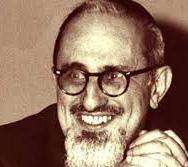
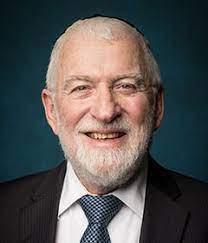
Exploring the Rav’s Insight
At the siyum celebrating the completion of learning a Talmudic tractate, we enu merate Rav Papa’s ten sons, repeating the father’s name for all of them (Chanina bar Papa, Rami bar Papa, etc.). Why was Rav Papa chosen for this honor?
Rabbi Yosef Shalom Elyashiv quoted to his son-in-law Rabbi Yitzchok Zilberstein an explanation of the rabbi of Tehflik. Ten times in the Talmud do we find disputes where Rav Papa rules that we should follow both opinions. These are not esoteric cases; some even concern the wording of blessings recited every day. Why didn’t Rav Papa take a side? The rabbi of Tehflik suggested that Rav Papa was concerned for the honor of each and every sage. On account of his sensitivity, Rav Papa merited ten sons who became great Torah scholars in their own right.[13]
Perhaps we can also suggest that Rav Pap pa’s resolve to combine opposing positions reflected his desire for peace and harmony. The ten sons that came together around the
table of the siyum exemplified the kind of unity he pursued throughout his life and inculcated in his children.
Whenever prayer and Torah learning is brought to a formal conclusion the Sages charge us to express a longing for broth erhood and peace. Rav Pappa was the paradigmatic Talmudic sage who sought to make peace in halachic decision-making, and he continues to serve as an inspiring role model for us as we seek to incorporate this ideal in our own lives.
[1] Bava Batra 15a.
[2] Ibid.
[3] Weissman, Rav Shachter on the Parsha, 292–293.
[4] Bava Batra 15a
[5] Weissman, Rav Shachter on the Parsha, 293.
[6] Orach Chayim 669:1.
[7] Weissman, Rav Shachter on the Parsha, 293–294.
[8] Berachot 34a.
[9] Mi-Peninei ha-Rav, 143–144.
[10] Shir ha-Shirim Rabbah, 1:9. This cus tom is codified in Halachah (see the Rema on Yoreh De’ah 246:26).
[11] Reshimot Shiurim: Sukkah, 299. On Simchat Torah, we immediately begin the new Torah cycle after finishing the old one. The Rav argued that this underscores that the completion of a course of study is intended to pave the way for new and great insight in the next one. In support of this, the Rav quoted the custom in many com munities to give a single person the double honor of being chatan Torah and chatan Bereshit. See Harerei Kedem, 1:268.
[12] Reshimot Shiurim: Sukkah, 299.
[13] Zilberstein, Alenu Leshabe’ach, 583.
for very ill, lonely widow woman with no family. Cancer survivor/ serious heart condition. Desperately needs money for basic needs/ medical expenses/place to live.
joanmarastern@gmail.com Phone 058-778-0691

Endorsed by: Rabbi Zev Leff/Rabbi Yaacov Hillel/ Rabbi Simcha Sheinberg/ Rebbetzin Dena Weinberg/Rabbi Yisrael Gans/Rabbi Dayan Dunner Donations can be sent to:
Rebbetzin Tzipporah Gottlieb-Heller, Neve Yerushalayim Seminary, 1 Beit Yitshak Street, Har Nof, Jerusalem 94130 or to Matat Mordechai Charity, Tax deductible Bank Mizrachi Tefachot. Bank 20. Branch 520, account 128764. Widows account 3649
In a recently finished tama 38 building in Baka close to Emek Refaim. 4 rooms. good shape 2.99m shekel
Great Investment! 2 rooms in new building under construction in a Great location, only 1.69m shekel, 3 and 4 rooms also available






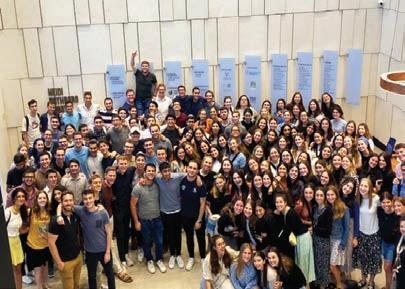
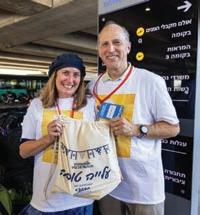


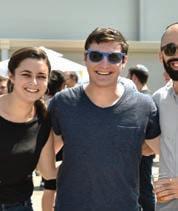




“redeemed”
to our attention.
Rabbi Grodzinski taught that the “redeemed” individual does not ignore the prevalence of evil in the world but disdains it and confronts it wisely and successfully. And Rabbi Ziv, the Alter, gifted us with the insight that our relationship with the Almighty can be reciprocal. Yes, He is our Savior. But we can reciprocate His salvation by bringing honor to His name by acting ethically and honestly, even in the face of temptation.
As we draw ever closer to the Passover holiday, , we now have learned of no less than six paths to redemption, six paths to “seeing ourselves as if we personally were redeemed from Egypt.”
Which of the six will you choose as your path? Or will you try your hand at all six?
Thanks to all who donated to the Chesed Yitzhak & Sheindel Rosh Hashanah Appeal.We are pleased to announce that the Amutah’s name has been changed to YESH EZRA.
From now on, to help the needy please:
• Assign checks to YESH EZRA and send them to “Yesh Ezra,” POB 36156, Romema, Jerusalem.






• Enter the Website at www.yeshezra.org and follow instructions for $ and NIS contributions.



YESH EZRA is poised to become one of Israel’s key charities assisting the needy, caring for children of divorced families, families with mentally ill members, and job assistance for the Chareidi community. Ketiva Vechatima Tova, Menachem Persoff, on behalf of YESH EZRA. menpmp@gmail.com 050-570-1067
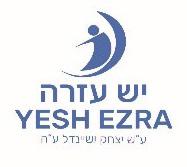




 SIMCHAT TORAH - V'ZOT HABRACHA
SIMCHAT TORAH - V'ZOT HABRACHA



Rebbetzin Shira Smiles shiur is sponsored for the 2022 academic year by Dr. & Mrs. Menachem Marcus in memory of their parents Rose & Dr. Emanuel Marcus ל”ז סוקרמ השמ ןב יכדרמו ריאמ ףסוי תב לזייר and Rosi & Ernest Strauss ל”ז
דומיל

Rabbi Goldin’s shiur is sponsored for the 2022 academic year by Dr. & Mrs. Menachem Marcus in memory of beloved aunts Irma Haas a”h and Hilde Myer a”h
Rabbi Manning’s shiur has been sponsored for the 2022 academic year ל”ז ןמלק
הנרב תמשנ יוליעל

Rabbi Kimche’s shiur has been sponsored for the 2022 academic year ל”ז

תמשנ יוליעל
Rabbi Taub’s weekly Thursday Parshat HaShavua Shiur is sponsored by The Jewish Legacy Foundation
Rabbi Breitowitz’s Sunday shiur for the 2022 academic year has been sponsored in Loving Memory of Rachel bat Yehuda Aryeh & Hensha a”h


